Articles > Geography
If you know Africa, then you’re probably ready to take on Africa Countries & Capitals or a bigger challenge of Africa Capitals Distance Challenge. Here are the capitals for each country in Africa.
Algiers, Algeria
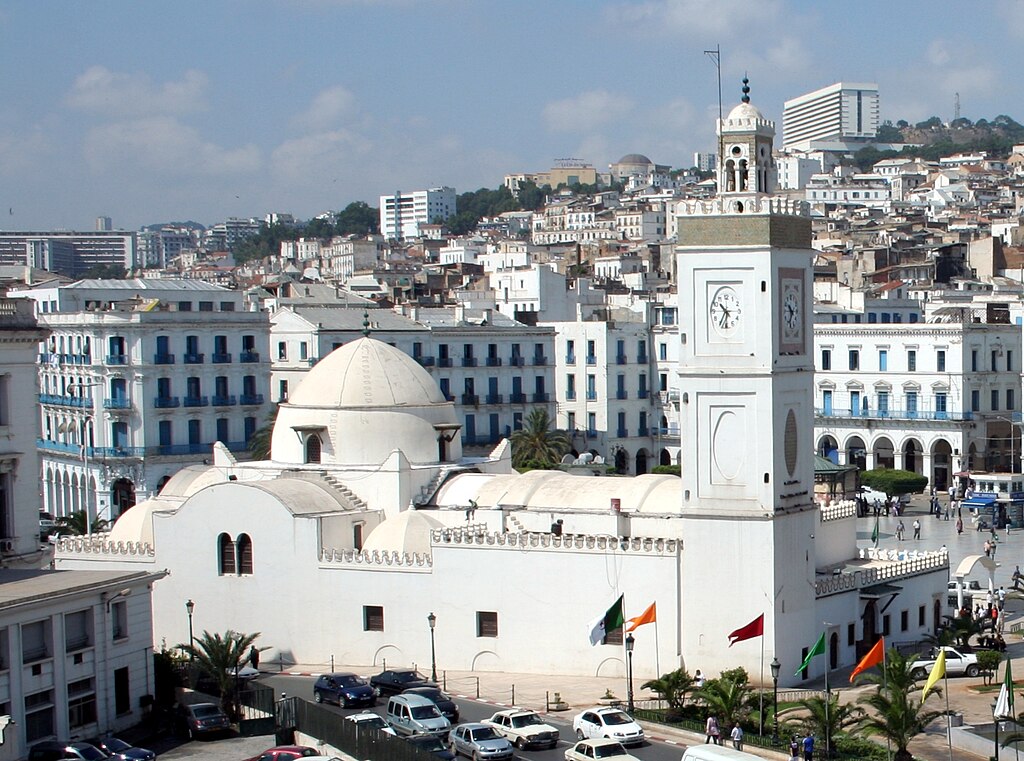
Algiers, the capital of Algeria, is located on the Mediterranean coast. With its mix of colonial French architecture and modern buildings, Algiers is one of Africa’s most fascinating capitals. Known as “Algiers the White” due to its white-washed buildings, the city is an important cultural and political center in the Maghreb region. Algiers is home to the National Museum of Fine Arts and the Kasbah, a UNESCO World Heritage site.
The city is surrounded by a mountainous backdrop, offering stunning views of the Mediterranean Sea. Algiers is also a significant hub for the oil and gas industry, contributing greatly to Algeria’s economy. Its rich history dates back to the Roman Empire and includes French colonial influences, which shape much of the city’s culture today.
Interesting Fact:
Algiers is known for its historic Kasbah, a labyrinth of narrow streets and alleys that dates back to the Ottoman period.
Luanda, Angola
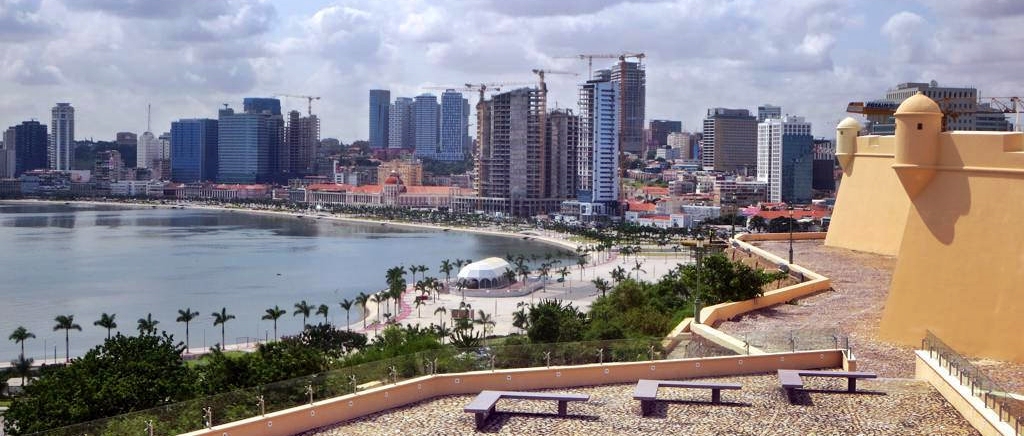
Luanda, the capital of Angola, is located along the Atlantic Ocean. It is the largest city in Angola and serves as the country’s primary port, cultural, and economic center. Founded in 1575 by the Portuguese, Luanda has a rich colonial history mixed with its modern vibrancy. The city is known for its bustling markets, beautiful beaches, and vibrant nightlife.
In recent years, Luanda has experienced rapid economic growth, primarily due to the country’s oil and diamond industries. It is also home to several cultural institutions, such as the National Museum of Anthropology and the National Art Museum of Angola. Despite its wealth, the city faces challenges such as poverty and urbanization issues, but it remains a key player in Africa’s economy.
Interesting Fact:
Luanda is one of the most expensive cities in the world, primarily due to the high demand for housing and the oil-driven economy.
Porto-Novo, Benin
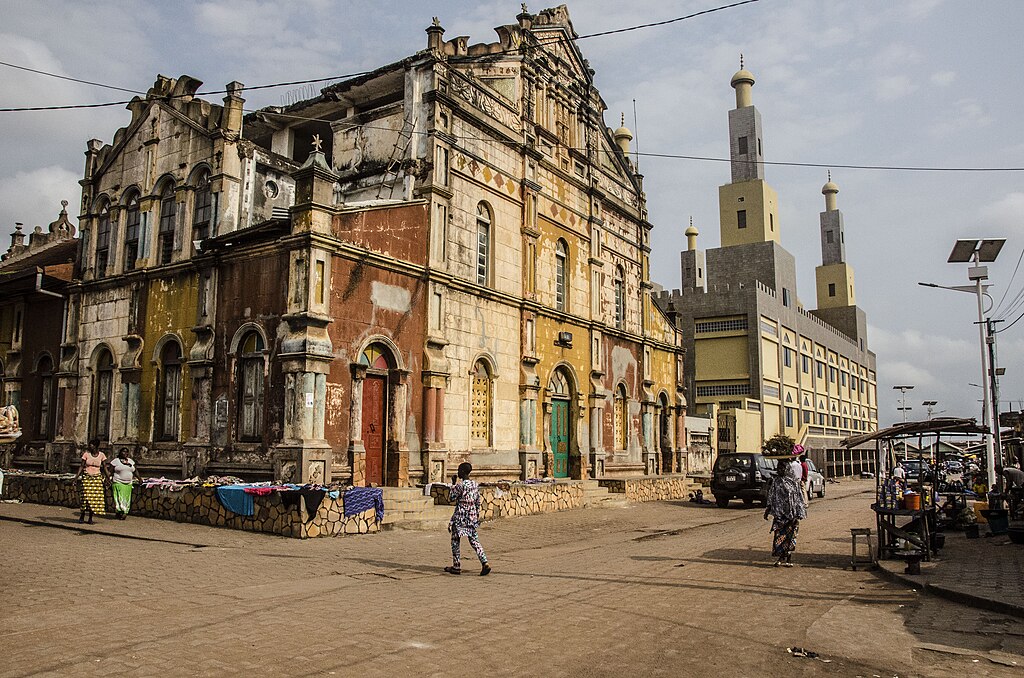
Porto-Novo, the capital of Benin, is located on the southern coast of the country along the Gulf of Guinea. While Porto-Novo serves as the official capital, the country’s economic and political activities are primarily centered in Cotonou, the largest city. Porto-Novo is known for its historical significance, rich culture, and beautiful colonial architecture.
As a cultural hub, Porto-Novo boasts a variety of museums, including the Ethnographic Museum and the Museum of the History of Benin. The city is also famous for its traditional ceremonies, colorful markets, and historical landmarks such as the Royal Palace of Abomey. The blend of modern and traditional life makes Porto-Novo a unique place to visit.
Interesting Fact:
Porto-Novo is home to the Royal Palace of Abomey, which was once the seat of the Kingdom of Dahomey, and it now serves as a UNESCO World Heritage site.
Gaborone, Botswana
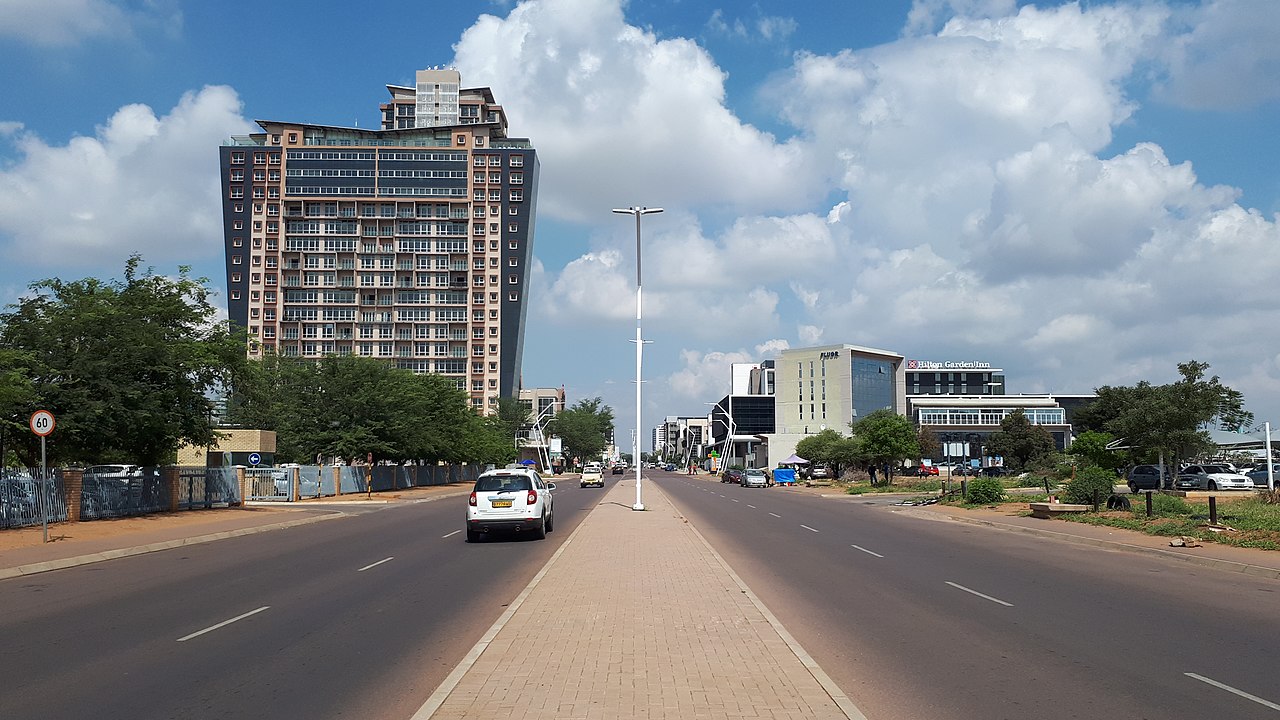
Gaborone is the capital and largest city of Botswana, located near the country’s southeastern border with South Africa. Founded in 1964, shortly before Botswana gained independence, Gaborone has rapidly grown into a modern and prosperous city. It is known for its clean streets, organized layout, and proximity to the nearby Tswapong Hills and the Gaborone Dam.
As the economic heart of Botswana, Gaborone is home to key government institutions, banks, and industries, particularly those related to diamond mining and tourism. The city also boasts a lively cultural scene with art galleries, theaters, and annual festivals. Despite its relatively small size, Gaborone is a vibrant, modern city with a growing economy.
Interesting Fact:
Gaborone is known for being one of the cleanest cities in Africa, with a strong emphasis on environmental sustainability and public cleanliness.
Ouagadougou, Burkina Faso
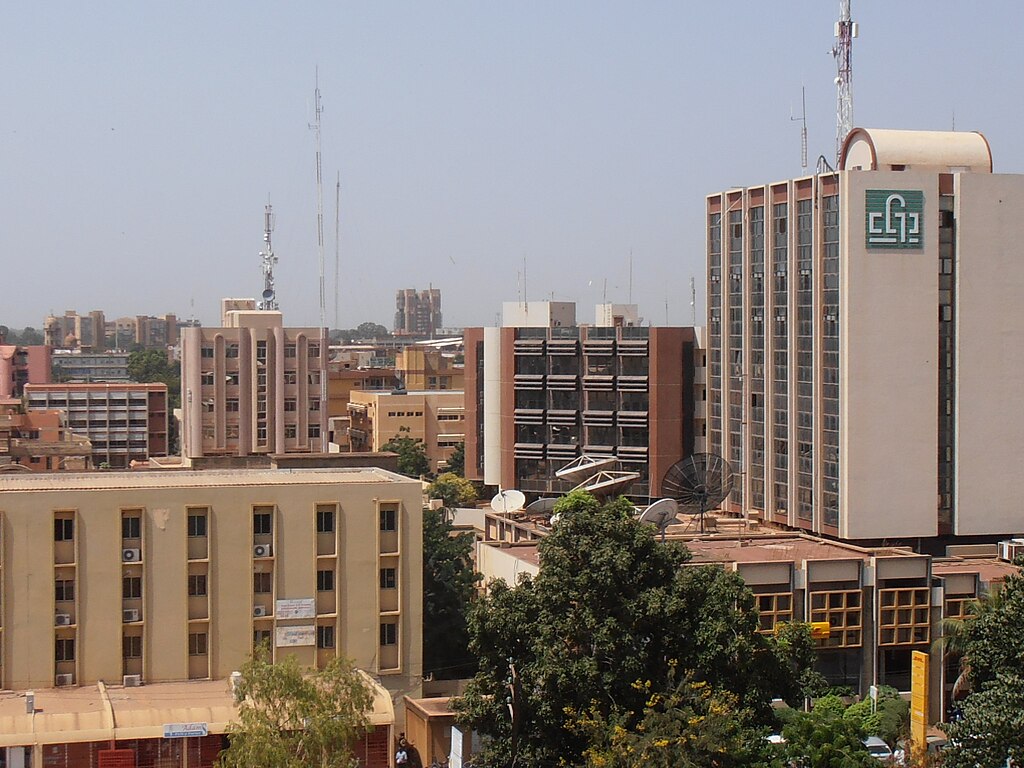
Ouagadougou, often referred to simply as “Ouaga,” is the capital and largest city of Burkina Faso. Known for its vibrant culture and arts scene, Ouagadougou is the political, cultural, and economic center of the country. The city is home to various historical landmarks, such as the National Museum of Burkina Faso and the Place des Cinéastes, a tribute to the country’s film industry.
Ouagadougou has a rich tradition of music, dance, and theater, with numerous festivals and cultural events held throughout the year, including the Panafrican Film and Television Festival of Ouagadougou (FESPACO), the largest film festival in Africa. The city is a hub for regional commerce and serves as a gateway for trade with neighboring countries.
Interesting Fact:
Ouagadougou is known for hosting FESPACO, Africa’s largest film festival, which celebrates African cinema and serves as an important cultural event for the continent.
Gitega, Burundi
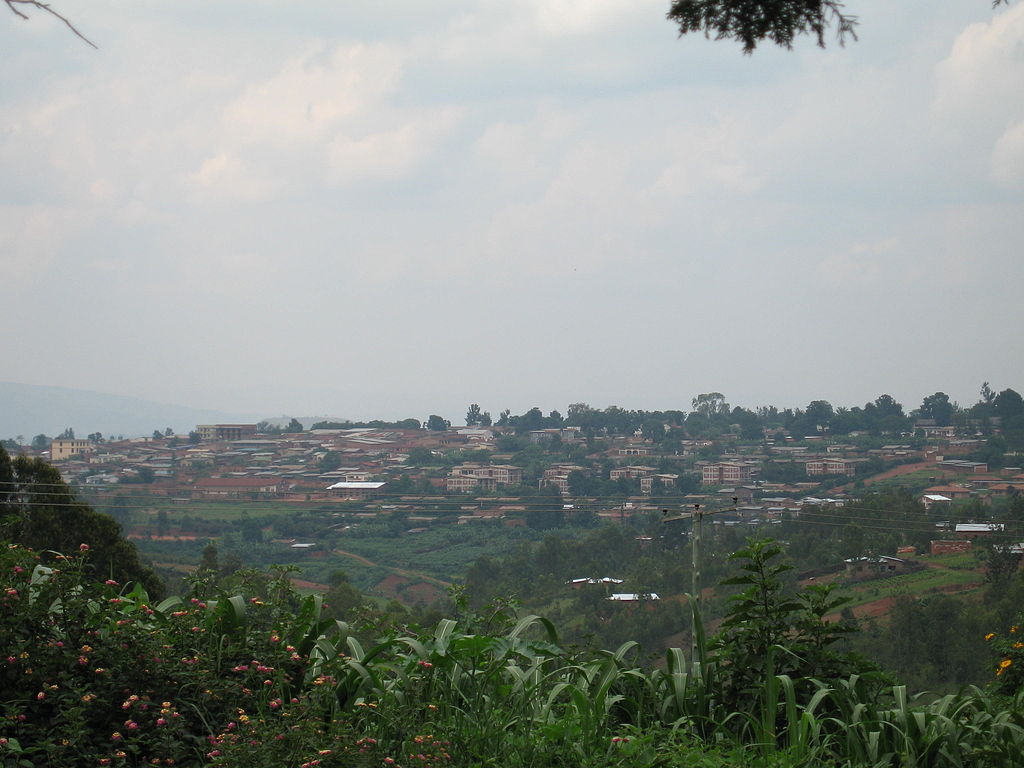
Gitega is the capital of Burundi, officially replacing Bujumbura in 2019. Located in the central part of the country, Gitega is a small city known for its rich cultural history and beautiful landscapes. The city sits near the Rusizi River and is surrounded by hills, offering stunning views of the Burundian countryside.
Gitega is home to various cultural institutions and historical landmarks, including the Gitega National Museum, which showcases the country’s heritage and traditions. The city’s transformation into the capital represents a shift toward decentralizing political power in the country. Gitega is also important for its role in agriculture, as much of the region’s economy depends on farming and pastoralism.
Interesting Fact:
Gitega became the capital of Burundi in 2019, replacing Bujumbura as part of a government initiative to decentralize the country’s administration.
Praia, Cabo Verde
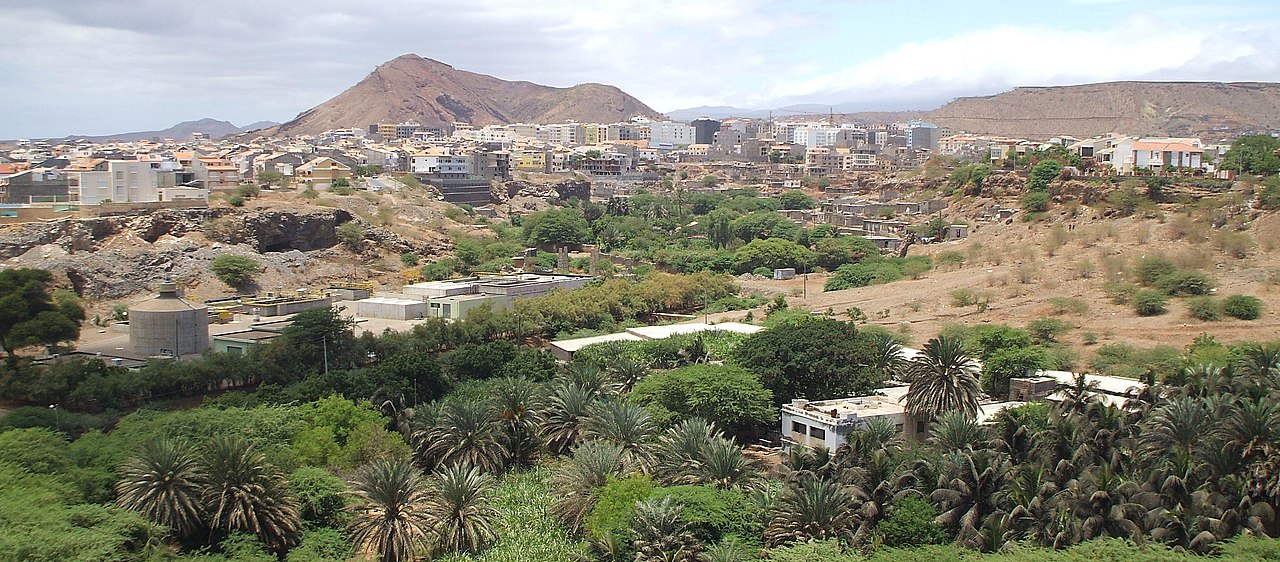
Praia is the capital of Cabo Verde, an island nation off the west coast of Africa. Located on the southern coast of Santiago Island, Praia is the largest city in the country and its economic and cultural hub. The city has a charming colonial heritage, with many buildings reflecting Portuguese influences, and a beautiful coastal setting.
Praia is a vibrant city known for its music, dance, and the lively atmosphere of its marketplaces. It is also a major port and the focal point for trade and business in Cabo Verde. The city’s tourism industry thrives on the islands’ natural beauty, with stunning beaches and hiking trails in the nearby mountains.
Interesting Fact:
Praia is known for its vibrant music scene, particularly its traditional Morna music, which blends African and Portuguese influences.
Yaoundé, Cameroon
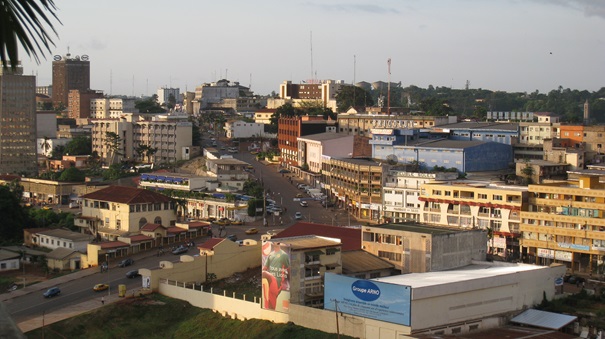
Yaoundé, the capital of Cameroon, is located in the central part of the country. The city, which is also the political and administrative center of Cameroon, is situated on the slopes of the volcanic Mount Cameroon. With a population of over 2 million people, Yaoundé is one of the country’s largest cities and serves as an important hub for business, education, and culture.
Yaoundé is home to several government institutions, universities, and cultural centers, including the National Museum and the Yaoundé Central Market. The city’s blend of modern architecture and traditional Cameroonian influences gives it a unique character. The surrounding hills and valleys offer a picturesque backdrop to the bustling city life.
Interesting Fact:
Yaoundé is known for its lush green hills and vibrant wildlife, with the nearby Mefou National Park home to rescued primates and a popular eco-tourism site.
Bangui, Central African Republic
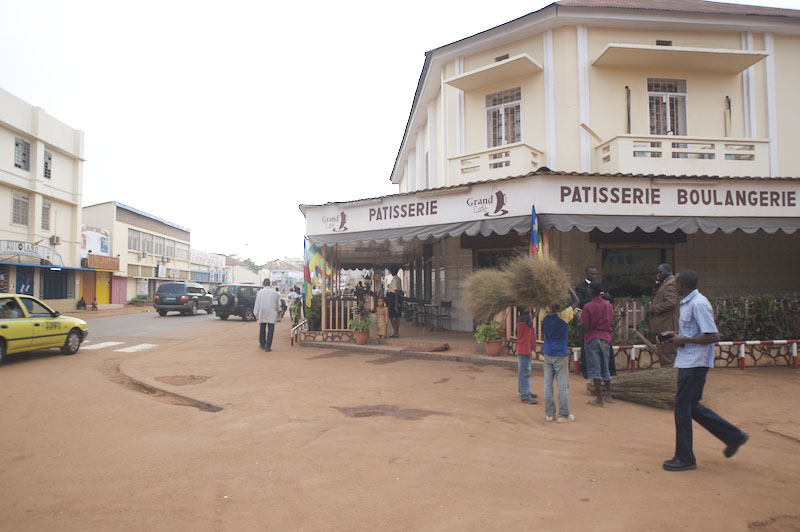
Bangui, the capital of the Central African Republic (CAR), is located along the banks of the Ubangi River, which forms the border with the Democratic Republic of Congo. As the largest city in the country, Bangui is the administrative, commercial, and cultural center of CAR. It is known for its vibrant markets and rich cultural history, with many of its buildings reflecting a blend of African, French, and colonial architectural styles.
Despite its beauty and significance, Bangui faces numerous challenges due to the ongoing political instability in the Central African Republic. However, the city is gradually becoming a place of hope for peace-building efforts, international aid, and reconstruction. Landmarks in the city include the National Museum, which houses an extensive collection of CAR’s historical artifacts.
Interesting Fact:
Bangui is situated at the confluence of the Ubangi and the Oubangui rivers, making it an important river port for trade and transport in the region.
N’Djamena, Chad
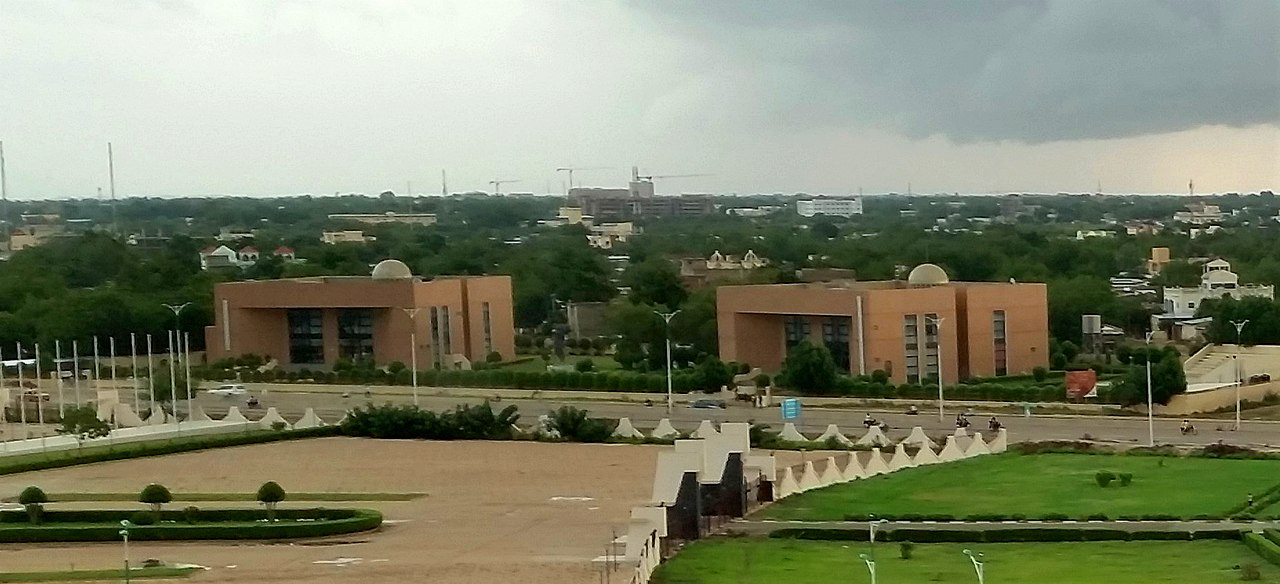
N’Djamena is the capital and largest city of Chad, located in the western part of the country along the Chari River, which forms the border with Cameroon. As the economic, political, and cultural center of Chad, N’Djamena is a vibrant city that serves as the country’s primary hub for commerce and administration.
The city is characterized by a combination of modern buildings and traditional structures, reflecting both the historical and contemporary aspects of Chad. N’Djamena has seen significant growth in recent years, though it still faces many challenges, such as poverty, inadequate infrastructure, and political instability. The city’s markets, mosques, and the National Museum of Chad are among its cultural highlights.
Interesting Fact:
N’Djamena is the only capital city in Chad and serves as the main entry point for travelers visiting the country, with a bustling international airport connecting the city to major world destinations.
Moroni, Comoros
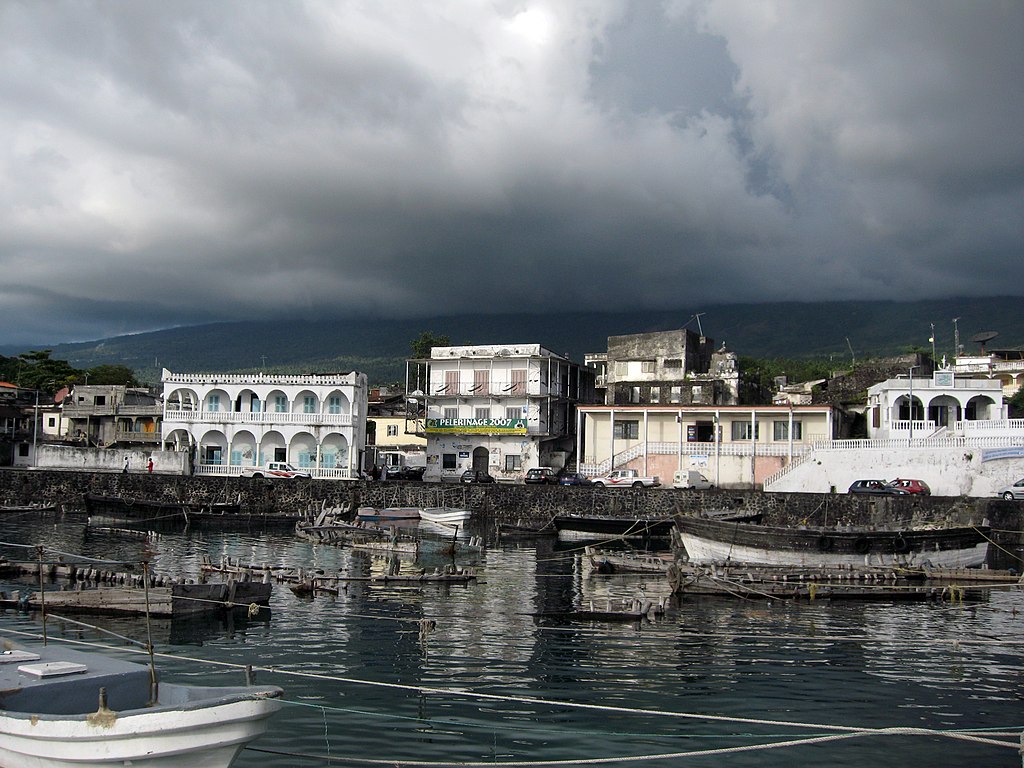
Moroni is the capital and largest city of Comoros, an island nation located off the eastern coast of Africa in the Indian Ocean. Situated on the island of Grand Comore, Moroni is a city known for its picturesque coastline, vibrant culture, and Islamic architecture. The city has a rich history shaped by the Arab, French, and African influences that have shaped the islands.
The city is a central hub for business, government, and culture in Comoros, despite the country’s relatively small population and limited resources. Moroni features markets selling local crafts, and its Islamic culture is evident in the many mosques throughout the city. The city’s natural beauty, including its beaches and lush surroundings, makes it a popular destination for visitors.
Interesting Fact:
Moroni is home to the Old Friday Mosque, which is one of the oldest mosques in the Indian Ocean region, dating back to the 15th century.
Kinshasa, Democratic Republic of the Congo
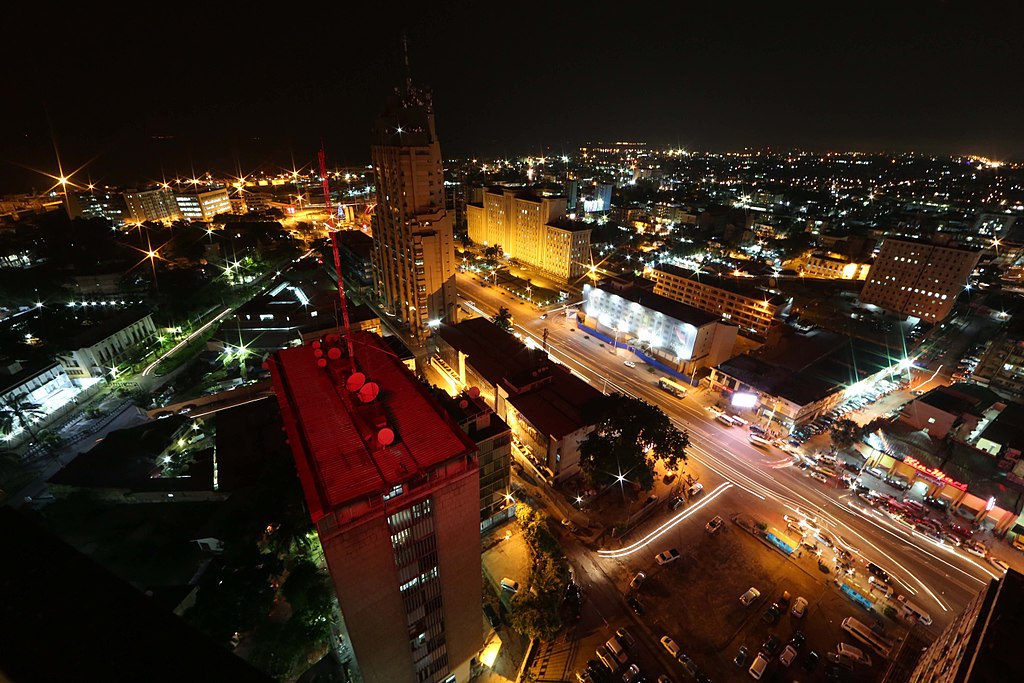
Kinshasa, the capital of the Democratic Republic of the Congo (DRC), is one of the largest cities in sub-Saharan Africa. Located on the banks of the Congo River, Kinshasa is a vibrant metropolis known for its rich culture, history, and economic significance. It is the political, economic, and cultural heart of the DRC, with a population of over 12 million people.
Kinshasa is a major African cultural center, known for its music scene, particularly the genre of soukous. The city is also home to many universities, markets, and theaters, making it a hub of education and entertainment in Central Africa. Despite facing challenges like rapid urbanization, poverty, and political instability, Kinshasa remains a lively and dynamic city.
Interesting Fact:
Kinshasa is located just across the river from Brazzaville, Congo, making it one of the few major cities in the world that is so close to another capital city, just 4 kilometers apart.
Djibouti, Djibouti
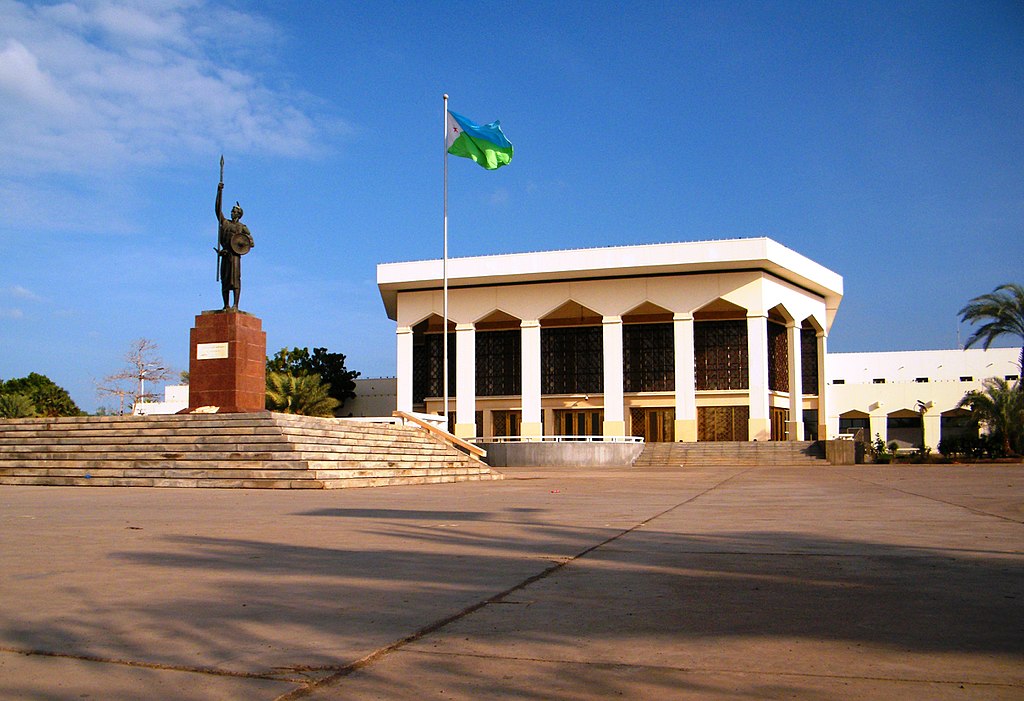
Djibouti is both the capital and largest city of the Republic of Djibouti, located on the Horn of Africa along the Bab-el-Mandeb Strait. Djibouti serves as a crucial port city, acting as a gateway for trade between the Red Sea and the Gulf of Aden. The city is a key economic and logistical hub, with the Port of Djibouti being one of the busiest in the region.
Djibouti is a city characterized by its unique geographical position, which has attracted international military bases due to its strategic location. The city has a combination of French colonial architecture, Arabic influences, and modern developments. Despite its small size, Djibouti plays an important role in international trade and diplomacy.
Interesting Fact:
Djibouti is one of the busiest shipping ports in Africa and serves as a critical naval base for various countries due to its strategic location at the crossroads of the Red Sea and the Gulf of Aden.
Cairo, Egypt
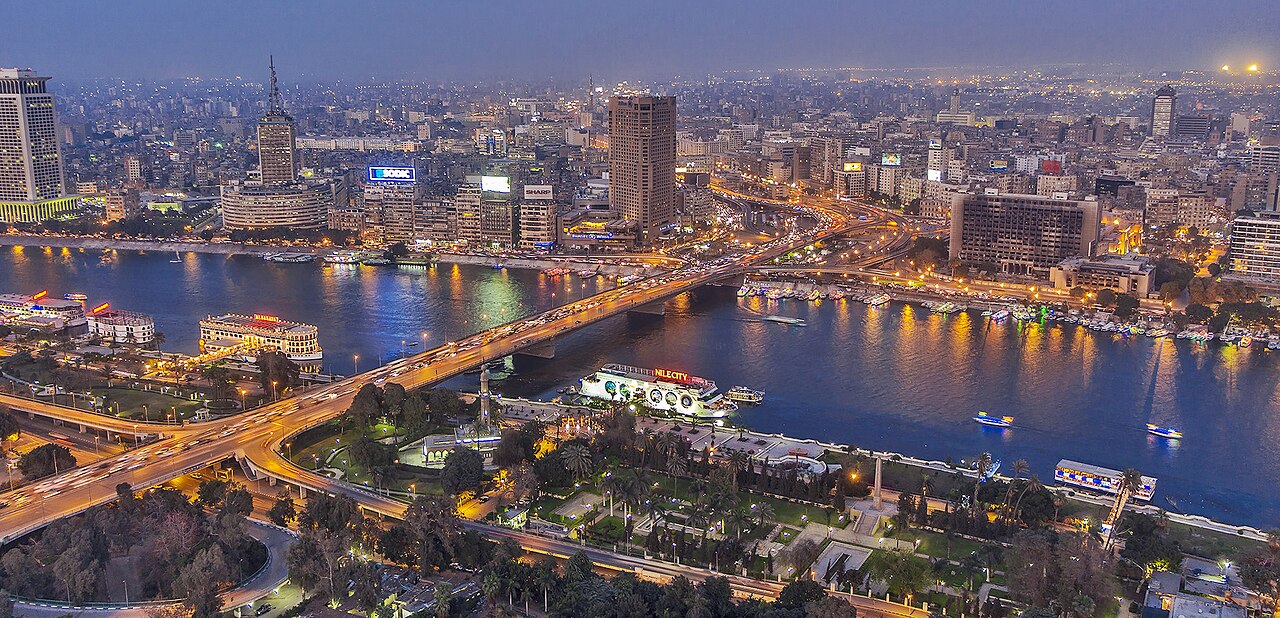
Cairo, the capital of Egypt, is the largest city in the Arab world and the Middle East. Located along the banks of the Nile River, Cairo is a historic city that has been at the center of Egyptian culture for millennia. As the political, cultural, and economic hub of the country, Cairo is home to many iconic landmarks, including the Great Pyramids of Giza, the Sphinx, and the Egyptian Museum.
Cairo is a city that blends ancient history with modern developments, with bustling markets, high-rise buildings, and traditional mosques and churches. The city is also a major center for education, hosting numerous universities and research institutions. Despite the heavy congestion and pollution, Cairo remains a vibrant and influential city in the Arab world and beyond.
Interesting Fact:
Cairo is famous for being the home of the ancient Pyramids of Giza, one of the Seven Wonders of the Ancient World, which are located just outside the city.
Malabo, Equatorial Guinea
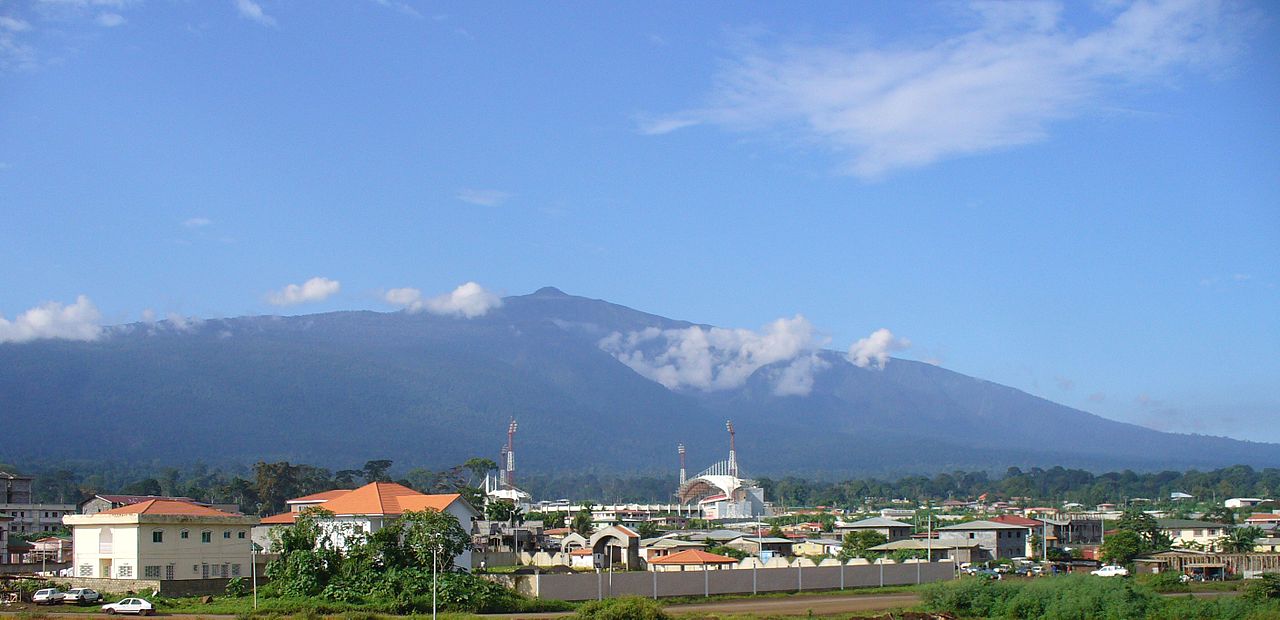
Malabo is the capital city of Equatorial Guinea, located on the northern coast of Bioko Island in the Gulf of Guinea. The city is the political and administrative center of the country, with a population of over 200,000 people. Malabo has a unique history, having been founded by the Spanish in the late 19th century, and it still maintains much of its colonial-era charm, seen in its architecture and layout.
The city is known for its scenic beauty, with views of nearby Mount Basilé and lush, tropical surroundings. Malabo’s harbor and waterfront areas are vital to the country’s economy, and the city serves as the country’s center for trade and commerce. Despite its small size, Malabo hosts a range of cultural and government institutions.
Interesting Fact:
Malabo is one of the few African capitals with significant Spanish influence, as Equatorial Guinea was a Spanish colony until it gained independence in 1968.
Asmara, Eritrea
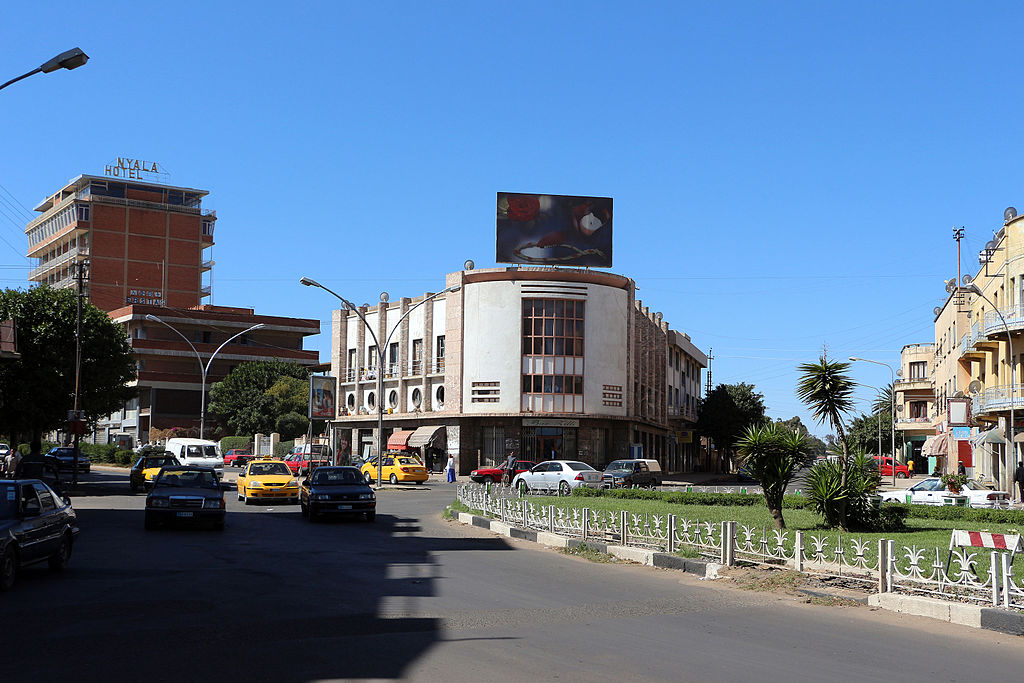
Asmara is the capital city of Eritrea, located in the highlands of the Horn of Africa. It is known for its Italian colonial-era architecture and its well-preserved cityscape, which has earned it recognition as a UNESCO World Heritage Site. Asmara is a vibrant city with a rich history, serving as the political and cultural center of the country.
The city’s architecture includes beautiful Art Deco and modernist buildings, reflecting the Italian influence during the colonial period. Asmara is also known for its scenic beauty, surrounded by mountains and offering a cooler climate compared to much of the region. Asmara is home to several cultural landmarks, including museums, art galleries, and religious sites.
Interesting Fact:
Asmara is often referred to as “Africa’s most Italian city” because of the extensive Italian colonial architecture, including a number of well-preserved Art Deco buildings.
Mbabane, Eswatini
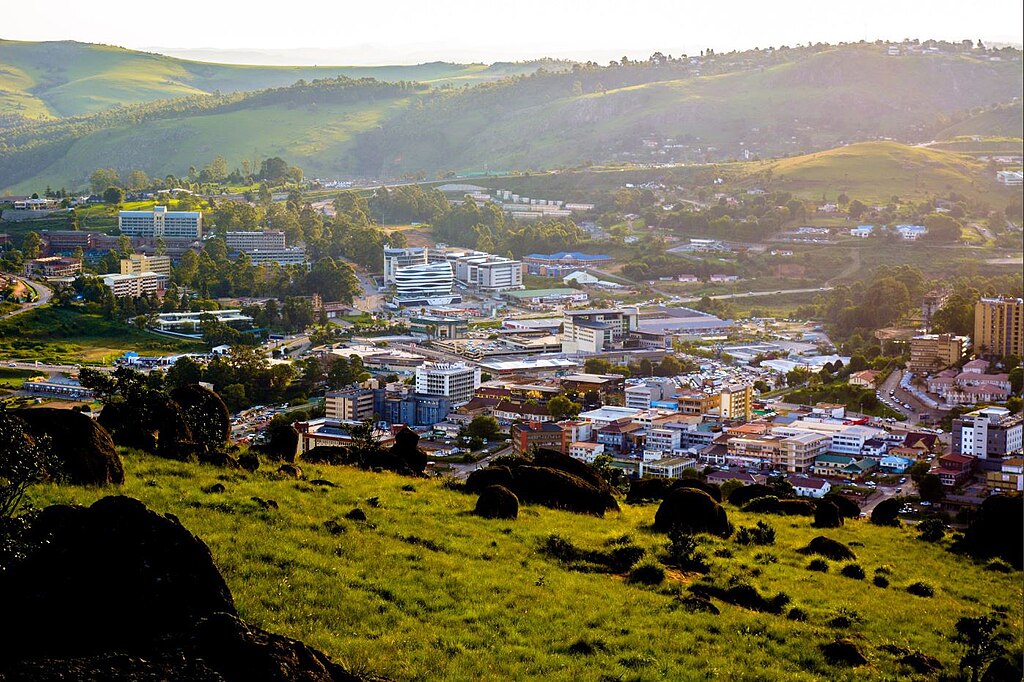
Mbabane is the administrative capital of Eswatini (formerly Swaziland), located in the western part of the country, surrounded by mountains. It serves as the seat of government and the country’s economic center, though the royal family resides in the traditional capital of Lobamba. Mbabane is a small but bustling city with a population of around 100,000 people.
The city is known for its picturesque landscapes, with forests and rolling hills that make for an impressive backdrop. Mbabane has a mix of modern infrastructure and traditional Swazi culture, and it is a key area for government offices, foreign embassies, and business activities. Its economy is driven by industries such as textiles, manufacturing, and trade.
Interesting Fact:
Mbabane is situated in a scenic valley, surrounded by the Malolotja and Mhlambanyatsi rivers, contributing to its cool and temperate climate compared to other areas of Eswatini.
Addis Ababa, Ethiopia
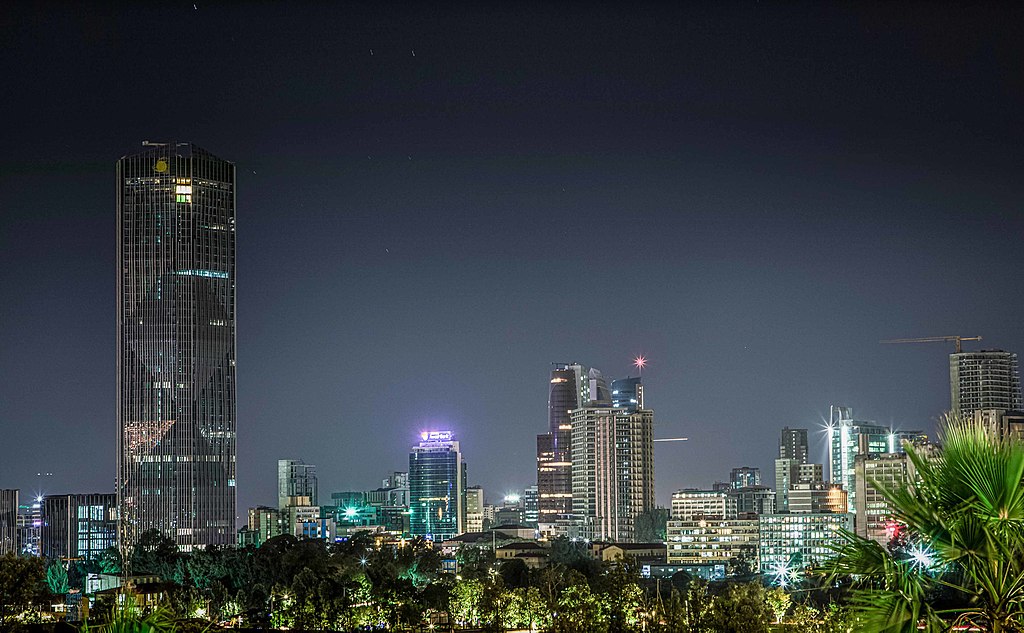
Addis Ababa is the capital city of Ethiopia and serves as the country’s political, cultural, and economic center. Located in the heart of the Ethiopian highlands, the city is one of the highest capitals in the world, situated at an elevation of over 2,300 meters (7,600 feet). Addis Ababa is known for its historical significance, modern infrastructure, and as the seat of the African Union (AU).
The city is a hub for diplomacy, with many international organizations and embassies based here. It is also home to important landmarks such as the National Museum, where the famous fossil “Lucy” is displayed, and the Addis Ababa University, one of Africa’s leading educational institutions. Addis Ababa’s economy is diverse, with key sectors in manufacturing, services, and trade.
Interesting Fact:
Addis Ababa is known as the “Political Capital of Africa” due to its role as the headquarters of the African Union and numerous other international organizations.
Libreville, Gabon
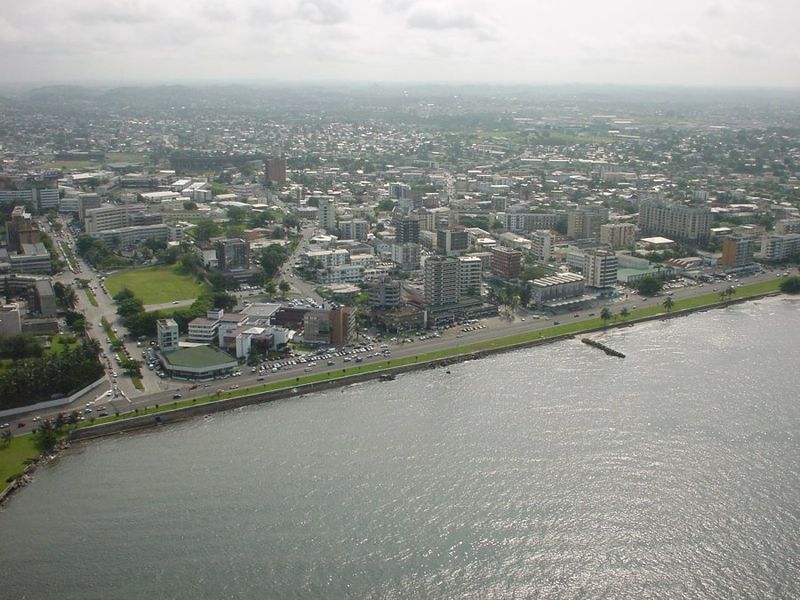
Libreville is the capital and largest city of Gabon, located along the Atlantic coast. It serves as the political, economic, and cultural heart of the country. Libreville was founded by freed slaves in the 19th century and has grown into a modern city with a population of over 700,000 people. The city boasts a mixture of colonial-era architecture and modern buildings.
Libreville is a vibrant city with a growing economy, largely driven by oil production, which contributes significantly to Gabon’s wealth. The city is home to various cultural landmarks, including museums and art galleries, as well as scenic views of the surrounding nature, such as the Akanda National Park, located just outside the city. Libreville is also a hub for business and commerce in Central Africa.
Interesting Fact:
Libreville was named after the word “libre,” meaning “free,” as it was founded by freed slaves, making it one of the few cities in Africa with such a unique origin story.
Banjul, Gambia
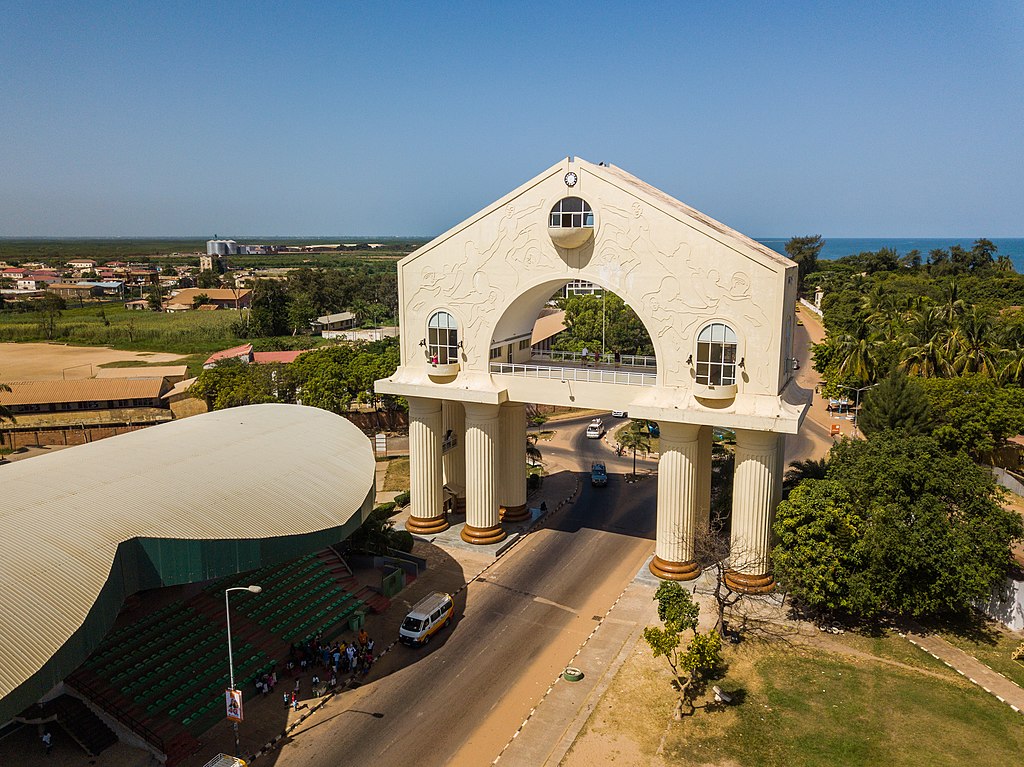
Banjul is the capital city of Gambia, located at the mouth of the Gambia River. The city is relatively small, with a population of around 40,000 people, but it plays a crucial role as the country’s administrative and commercial hub. Banjul was founded by the British in the 19th century and remains a significant port city.
Banjul’s economy revolves around the trade of agricultural products, especially peanuts, and it is a gateway to the rest of the country through the Gambia River. The city features a mix of colonial buildings, modern infrastructure, and traditional African markets. Banjul also serves as a center for culture and education, with several institutions offering higher education and vocational training.
Interesting Fact:
Banjul is one of the smallest capitals in Africa but is an important cultural and commercial center for the Gambia.
Accra, Ghana
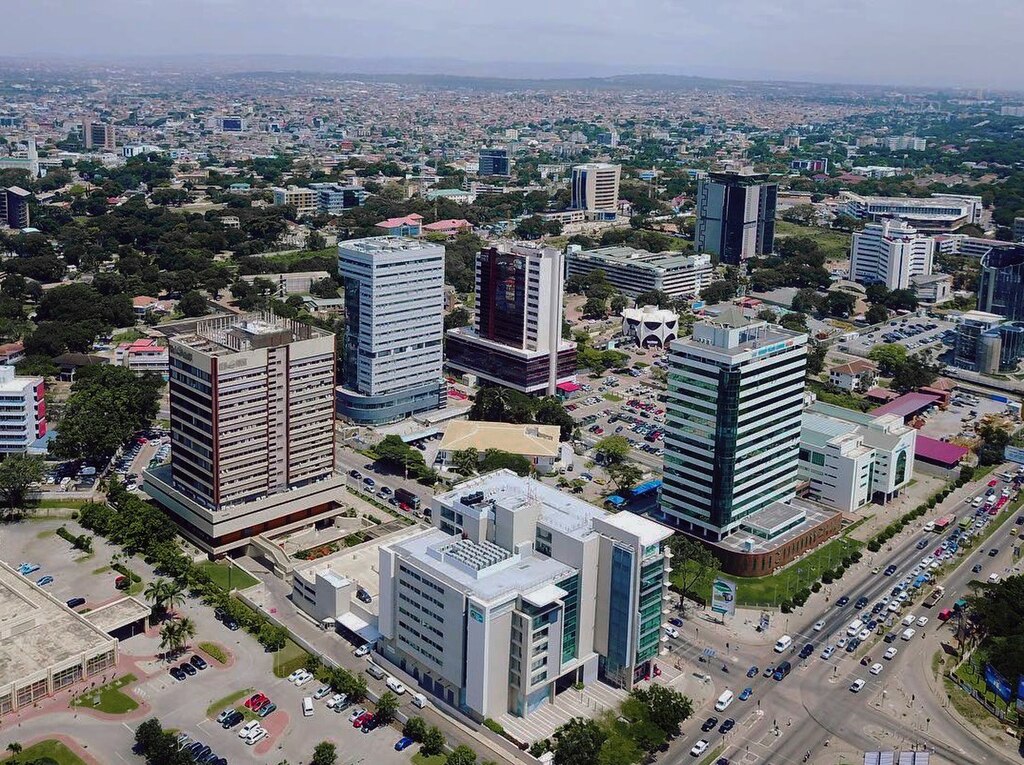
Accra is the capital and largest city of Ghana, located on the Gulf of Guinea coast. The city has a rich history and is the heart of Ghana’s political, economic, and cultural life. With a population exceeding 2 million, Accra is a bustling metropolis that blends modern urban infrastructure with a vibrant, traditional African culture. Founded by the British in the 17th century, Accra became the capital after Ghana’s independence in 1957.
Accra is known for its lively markets, historical landmarks, and coastal views. The city has several important cultural institutions, including the National Museum of Ghana, and the W.E.B. Du Bois Center, dedicated to the life of the prominent African-American scholar. The economy of Accra is diverse, with industries in shipping, commerce, and oil production. It also serves as a hub for international businesses and has seen significant urban growth in recent years.
Interesting Fact:
Accra is home to the famous Jamestown district, known for its colonial architecture and lively cultural atmosphere, and it is one of the oldest cities in West Africa.
Conakry, Guinea
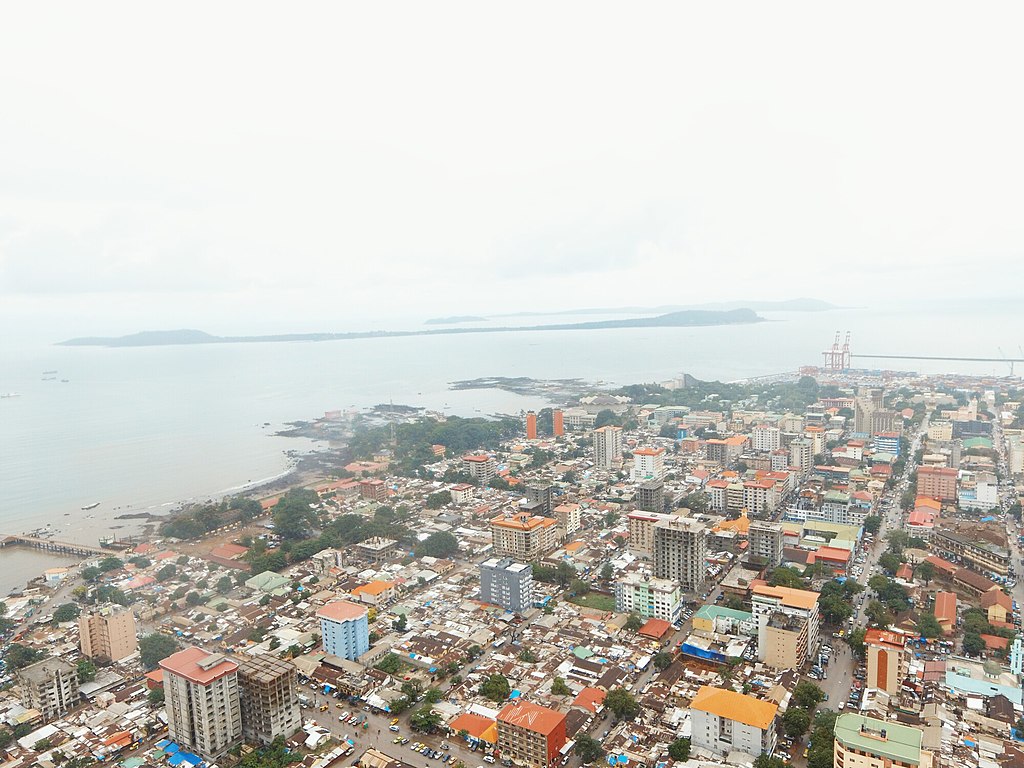
Conakry is the capital and largest city of Guinea, located on the Atlantic coast of West Africa. The city serves as the political, cultural, and economic center of the country, with a population of over 2 million people. Conakry is known for its bustling port, which is crucial to the country’s trade and export activities, particularly in minerals and agriculture.
Founded by the French in the 19th century, Conakry is a blend of colonial architecture and modern infrastructure. The city is also home to a variety of ethnic groups, and its vibrant markets and lively music scene reflect this cultural diversity. Key landmarks include the National Museum of Guinea and the Grand Mosque of Conakry, which is one of the largest in West Africa.
Interesting Fact:
Conakry is located on a small island off the coast, which makes it one of the few capitals in Africa located on an island.
Bissau, Guinea-Bissau
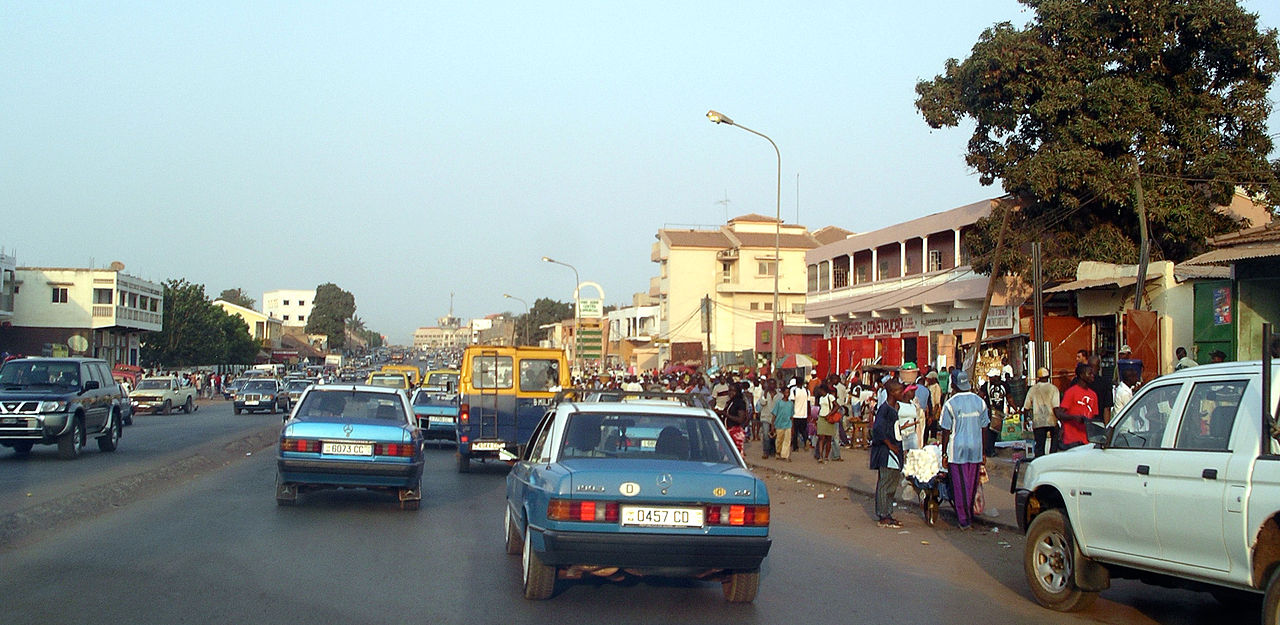
Bissau is the capital and largest city of Guinea-Bissau, located on the Atlantic coast. The city serves as the political, economic, and cultural hub of the country. With a population of around 400,000 people, Bissau is relatively small but holds significant importance in the context of Guinea-Bissau’s history. The city was founded by the Portuguese in the 18th century and became the capital upon the country’s independence in 1973.
Bissau is known for its coastal setting, with beautiful beaches and a tropical climate. The city is home to several important cultural institutions, including the Bissau National Museum, which showcases the history of Guinea-Bissau and the region. The economy of Bissau is based primarily on agriculture, with cashew nuts being one of the main exports. Despite challenges in infrastructure and development, Bissau remains the economic center of Guinea-Bissau.
Interesting Fact:
Bissau is one of the smallest capitals in West Africa, yet it plays a central role in the region’s political and cultural landscape.
Yamoussoukro, Ivory Coast (Côte d’Ivoire)

Yamoussoukro is the political capital of Ivory Coast (Côte d’Ivoire), located in the central part of the country. Despite being the political capital, the economic and commercial hub of the country is Abidjan. Yamoussoukro is a planned city that was chosen as the capital in 1983, and it is known for its large government buildings, wide boulevards, and impressive architecture, including the Basilica of Our Lady of Peace, which is one of the largest churches in the world.
The city has a population of about 300,000 people and is home to many government institutions and embassies. Yamoussoukro also plays an important role in agriculture, particularly in the production of cocoa and coffee, which are key exports for Ivory Coast. The city’s unique blend of modern infrastructure and traditional culture makes it an interesting destination.
Interesting Fact:
Yamoussoukro is famous for the Basilica of Our Lady of Peace, which was modeled after St. Peter’s Basilica in Vatican City, and is one of the largest churches in the world.
Nairobi, Kenya
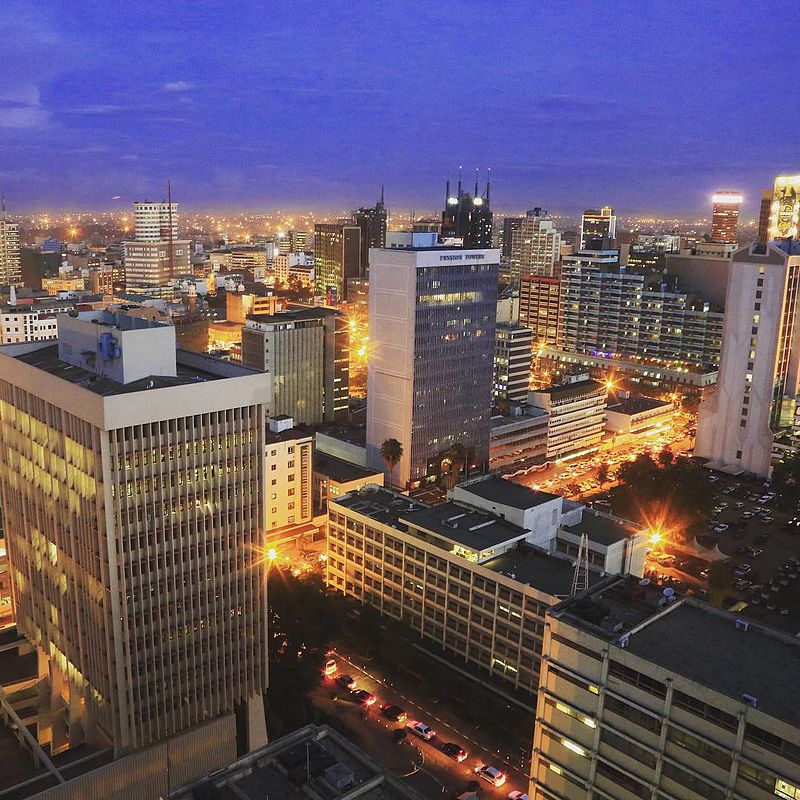
Nairobi is the capital and largest city of Kenya, located in the central part of the country. The city is one of the most important political, economic, and cultural centers in East Africa. Nairobi is known for its unique combination of modernity and nature, with a thriving metropolis that shares space with wildlife. The Nairobi National Park, located just outside the city center, is one of the only parks in the world with a view of the city skyline.
Founded in 1899 as a railway depot, Nairobi quickly grew into a major hub for trade and commerce. Today, it is home to a vibrant economy driven by industries such as finance, telecommunications, and agriculture. Nairobi also serves as a key center for international organizations and NGOs, with many regional offices located in the city. Its cultural scene is diverse, with a variety of art galleries, theaters, and music venues.
Interesting Fact:
Nairobi is the only city in the world where you can see wild animals, including lions and giraffes, against the backdrop of a bustling urban skyline.
Maseru, Lesotho
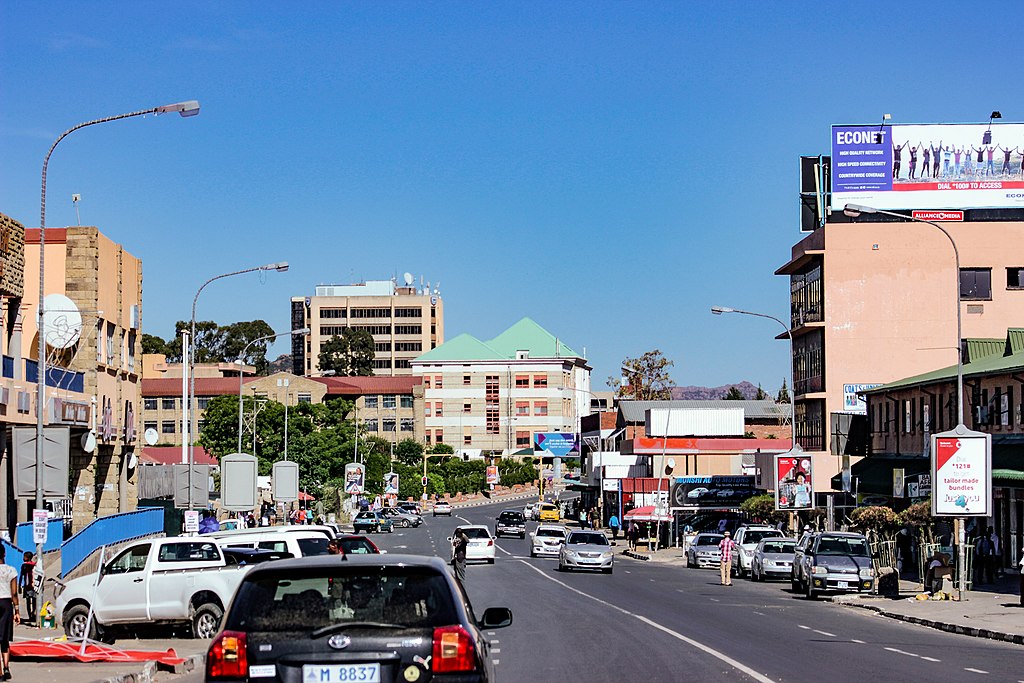
Maseru is the capital and largest city of Lesotho, a small landlocked country entirely surrounded by South Africa. Situated on the banks of the Caledon River, Maseru serves as the political, economic, and cultural center of Lesotho. With a population of approximately 300,000 people, the city is characterized by its stunning mountainous landscapes and its role as a regional transportation hub.
Established in the 19th century, Maseru grew rapidly following Lesotho’s independence from Britain in 1966. The city is home to government buildings, diplomatic missions, and many of the country’s main economic activities, such as manufacturing and agriculture. The city is also a focal point for education and health services in the country. Despite its small size, Maseru plays a crucial role in the daily lives of Basotho people.
Interesting Fact:
Maseru is one of the few capital cities in the world entirely surrounded by another country (South Africa), giving it a unique geographical position.
Monrovia, Liberia
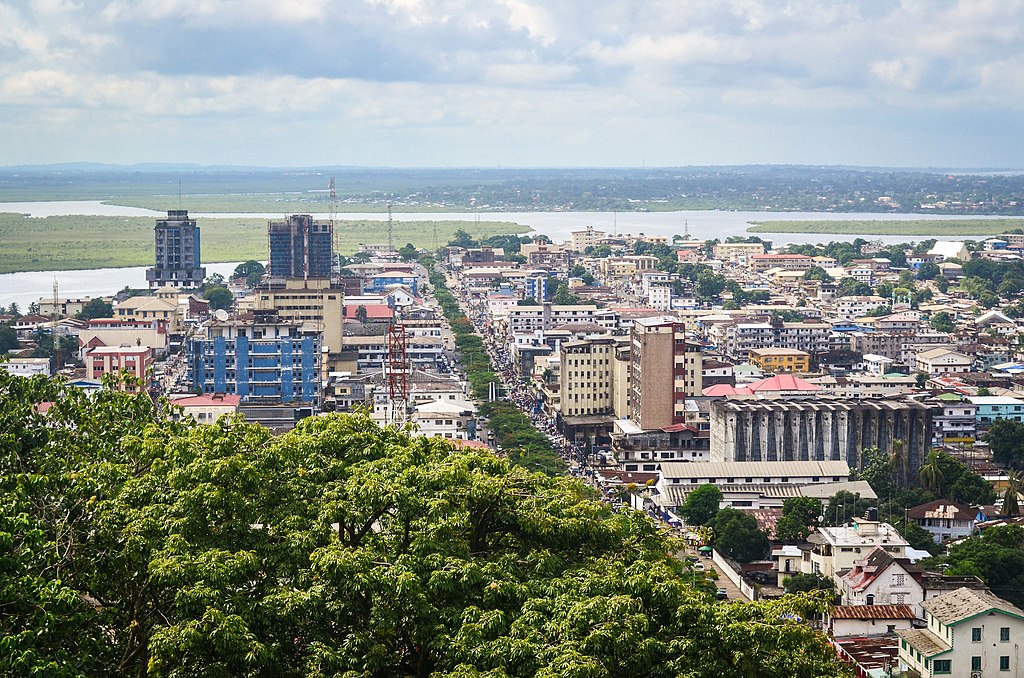
Monrovia is the capital and largest city of Liberia, located along the Atlantic coast. Founded by freed American slaves in the 19th century, Monrovia is named after U.S. President James Monroe. The city serves as Liberia’s political, economic, and cultural hub, with a population of about 1 million people. Monrovia is known for its deep-water harbor and its significance in Liberia’s history as a symbol of freedom and independence.
The city is home to several historical landmarks, including the Liberia National Museum and the Centennial Pavilion. Monrovia also has a vibrant music scene, which is an integral part of the local culture. While Liberia has faced political instability and civil war in the past, Monrovia has seen significant growth in recent years. It remains the focal point of Liberia’s commerce, industry, and education.
Interesting Fact:
Monrovia is unique in that it was founded by freed slaves from the United States, and it has strong historical ties to American culture, including the use of English as the official language.
Tripoli, Libya
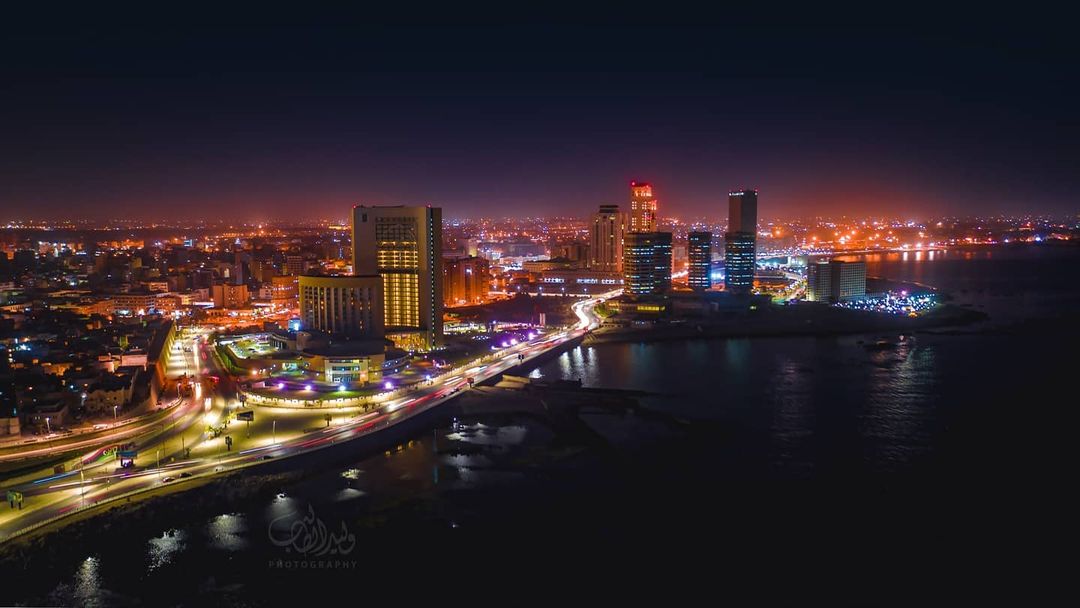
Tripoli is the capital and largest city of Libya, located on the Mediterranean coast. With a history dating back to the Phoenician period, Tripoli has long been a major center of trade and culture in North Africa. Today, the city remains the political and economic heart of Libya. The city is known for its vibrant marketplaces, historical monuments, and its strategic importance as a key port.
Tripoli’s old town, known as the Medina, is a UNESCO World Heritage site and is home to a variety of historical buildings, such as the Red Castle (Assaraya al-Hamra) and the Grand Mosque. The city has also seen modernization in recent years, with improved infrastructure and a growing business sector. Although Tripoli has faced challenges due to political instability, it continues to play a major role in Libya’s economic activities, particularly in oil and gas.
Interesting Fact:
Tripoli is one of the oldest cities in the Mediterranean, with a history that stretches over 2,000 years, and it was once a key city in the Roman Empire.
Antananarivo, Madagascar
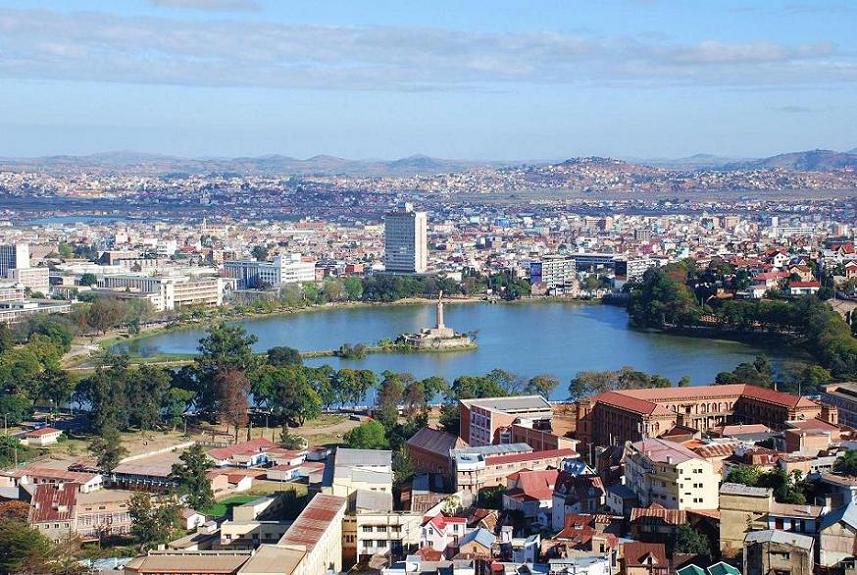
Antananarivo, often referred to simply as Tana, is the capital and largest city of Madagascar, located in the central highlands of the island. With a population of over 1.5 million, Antananarivo serves as the political, economic, and cultural center of Madagascar. The city is known for its scenic landscapes, including lush hills and rice terraces, which provide a beautiful backdrop to its urban setting.
Antananarivo was founded in the early 17th century and became the capital of Madagascar in the 19th century. The city is home to a number of historical sites, including the Royal Palace, which was the residence of the Merina monarchy, and the Ambohimanga Hill, which is a UNESCO World Heritage site. The city is also known for its vibrant markets, local crafts, and rich Malagasy culture.
Interesting Fact:
Antananarivo is famous for its unique blend of colonial and traditional Malagasy architecture, with narrow, winding streets that reflect the city’s rich cultural history.
Lilongwe, Malawi
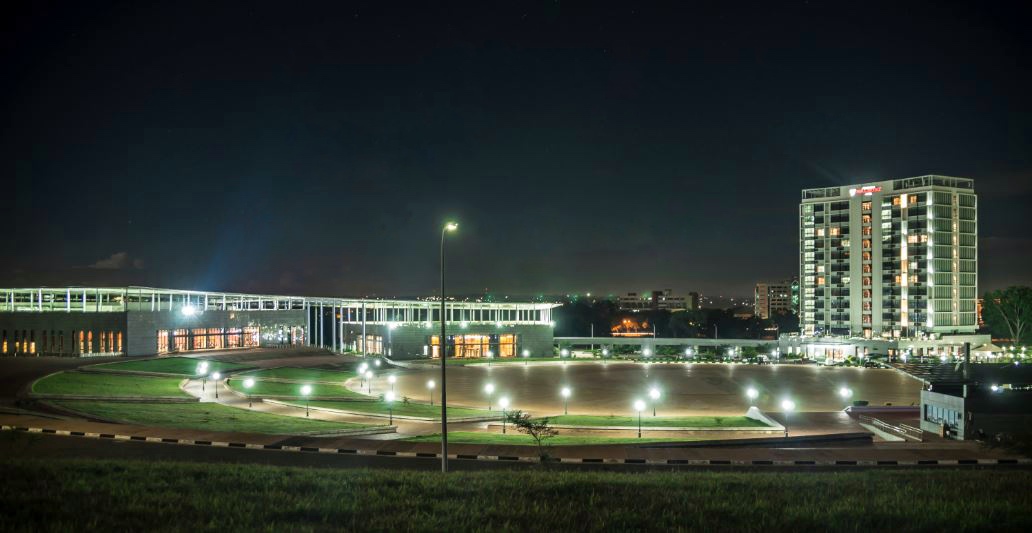
Lilongwe is the capital and largest city of Malawi, located in the central part of the country. The city serves as the political, economic, and cultural center of Malawi, with a population of about 1 million people. Lilongwe is known for its calm atmosphere and greenery, with a mix of modern infrastructure and traditional Malawian culture.
Lilongwe was chosen as the capital of Malawi in 1975, replacing Zomba. The city is divided into two main areas: the Old Town, which is the traditional commercial and administrative center, and the New Town, which houses modern government buildings, hotels, and residential areas. Lilongwe is situated near the Lilongwe River, which provides a scenic environment for the city and is vital for its water supply.
Interesting Fact:
Lilongwe’s tranquil environment, combined with its proximity to natural reserves, has made it a popular spot for tourists exploring Malawi’s wildlife and natural beauty.
Bamako, Mali
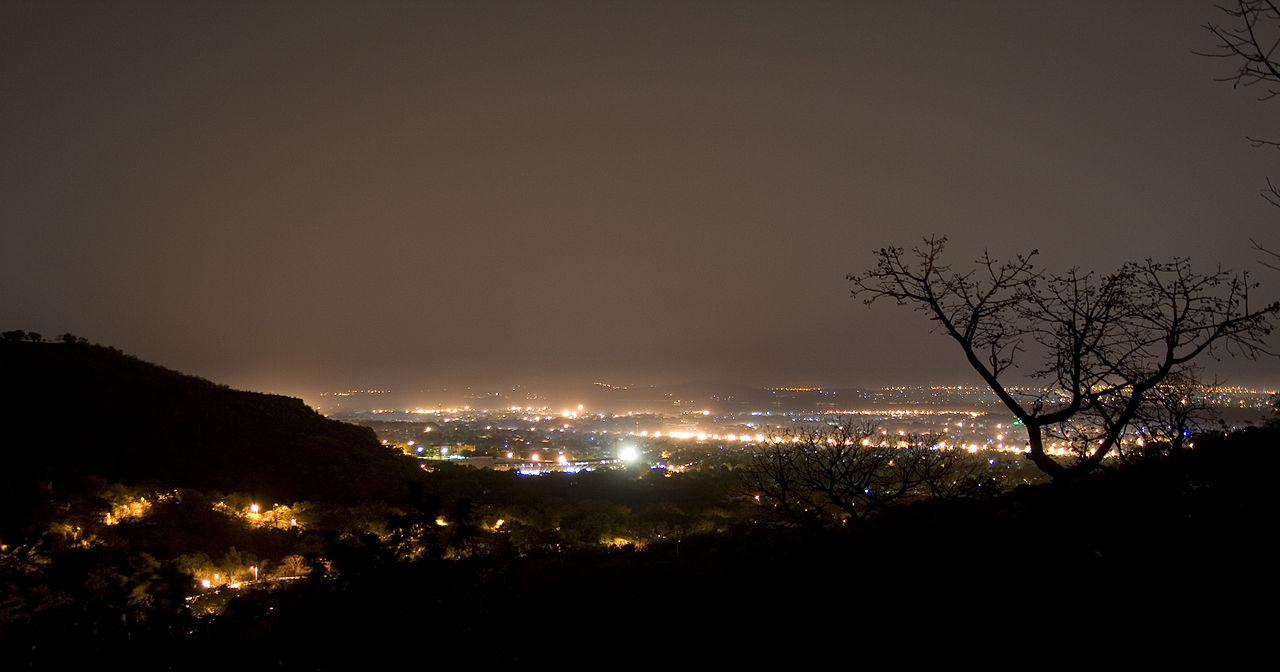
Bamako is the capital and largest city of Mali, located along the Niger River in West Africa. The city is the political, cultural, and economic heart of Mali, with a population of about 2 million people. Founded in the 11th century as a trading post, Bamako grew rapidly during the colonial period and became the capital after Mali gained independence in 1960.
Bamako is known for its lively markets, vibrant music scene, and diverse culture, with a strong influence from traditional Malian art and music. The city has a mix of modern architecture and traditional structures, and it serves as a key center for Mali’s agricultural and industrial production. Bamako also offers visitors cultural attractions such as the National Museum of Mali, which showcases the country’s history and heritage.
Interesting Fact:
Bamako is famous for its vibrant music scene, particularly in the genres of Mali blues and traditional drumming, making it one of West Africa’s cultural hubs.
Nouakchott, Mauritania
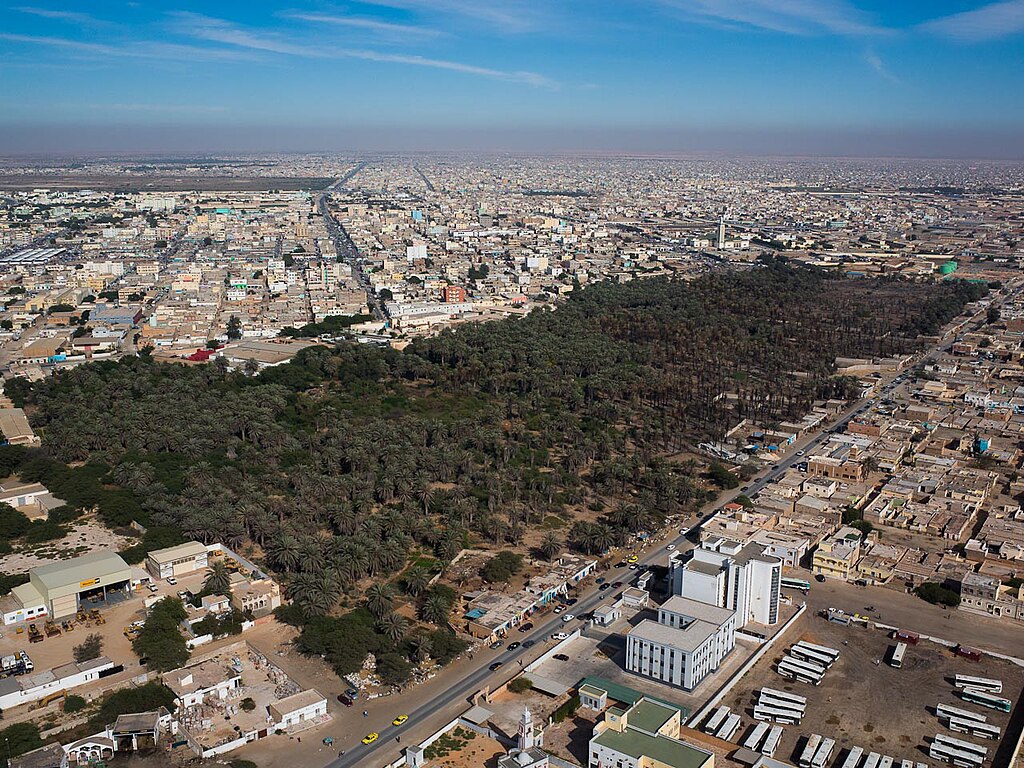
Nouakchott is the capital and largest city of Mauritania, located on the Atlantic coast of North-West Africa. Established in 1958, it became the capital of Mauritania shortly after the country gained independence from France in 1960. With a population of over a million people, Nouakchott is a major center for trade and government in Mauritania.
The city has expanded rapidly over the past few decades and is known for its modern infrastructure, markets, and vibrant street life. Nouakchott is a major port for Mauritania’s fishing industry, and its location along the coast has contributed to its economic importance. While Nouakchott has a bustling urban atmosphere, it is also known for its proximity to the desert, offering a unique contrast between the city’s growing modernity and the surrounding arid landscape.
Interesting Fact:
Nouakchott is one of the few cities in the world that has experienced such rapid growth, evolving from a small fishing village to a modern capital in just a few decades.
Port Louis, Mauritius
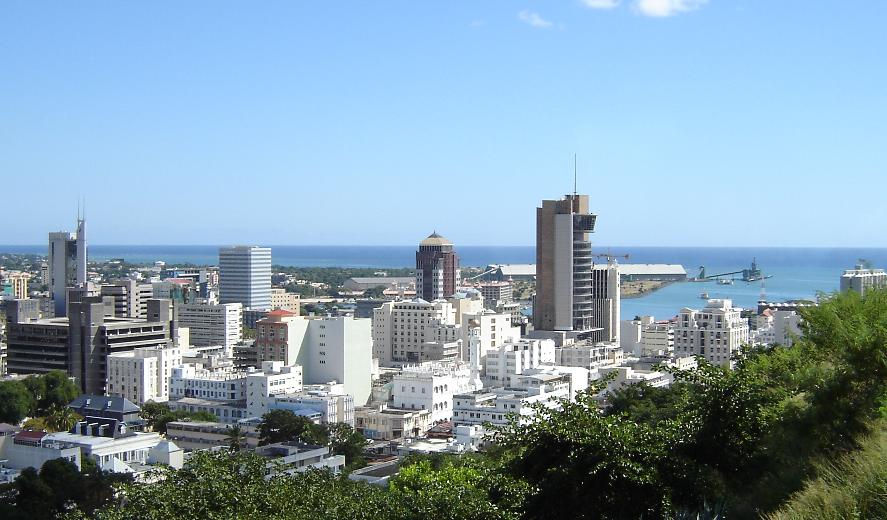
Port Louis is the capital and largest city of Mauritius, located on the island’s northwest coast. Founded in the 18th century, it serves as the economic, cultural, and administrative hub of the island nation. Port Louis is home to a diverse population, reflecting the island’s multicultural heritage, which blends African, European, and Asian influences.
The city is famous for its deep-water port, which is one of the busiest in the Indian Ocean. Port Louis also boasts a number of historical landmarks, including the Aapravasi Ghat, a UNESCO World Heritage site, and the Central Market, where visitors can experience the island’s vibrant culture. The city also serves as a gateway for tourists heading to Mauritius’ renowned beaches and natural reserves.
Interesting Fact:
Port Louis is home to the world-famous Mauritius Stamp Museum, which showcases the history of postage stamps from around the globe, highlighting Mauritius’ significant role in the development of postal history.
Rabat, Morocco

Rabat is the capital of Morocco and one of the country’s four imperial cities. Located on the Atlantic Ocean, it has served as the political and administrative capital of Morocco since 1912. With a population of around 1.8 million, Rabat is an important cultural, political, and economic center. The city is renowned for its historic landmarks, including the Hassan Tower, the Kasbah of the Udayas, and the Royal Palace.
Rabat is a city that blends modernity with tradition. It is home to many institutions of higher learning, as well as the headquarters of several international organizations. The city’s streets are lined with both modern buildings and historical structures, showcasing its rich cultural heritage. Rabat is also a center of diplomacy, as it hosts many embassies and consulates.
Interesting Fact:
Rabat was named a UNESCO World Heritage site for its exceptional mix of historic monuments and modern cultural vibrancy, making it one of the most unique cities in Morocco.
Maputo, Mozambique
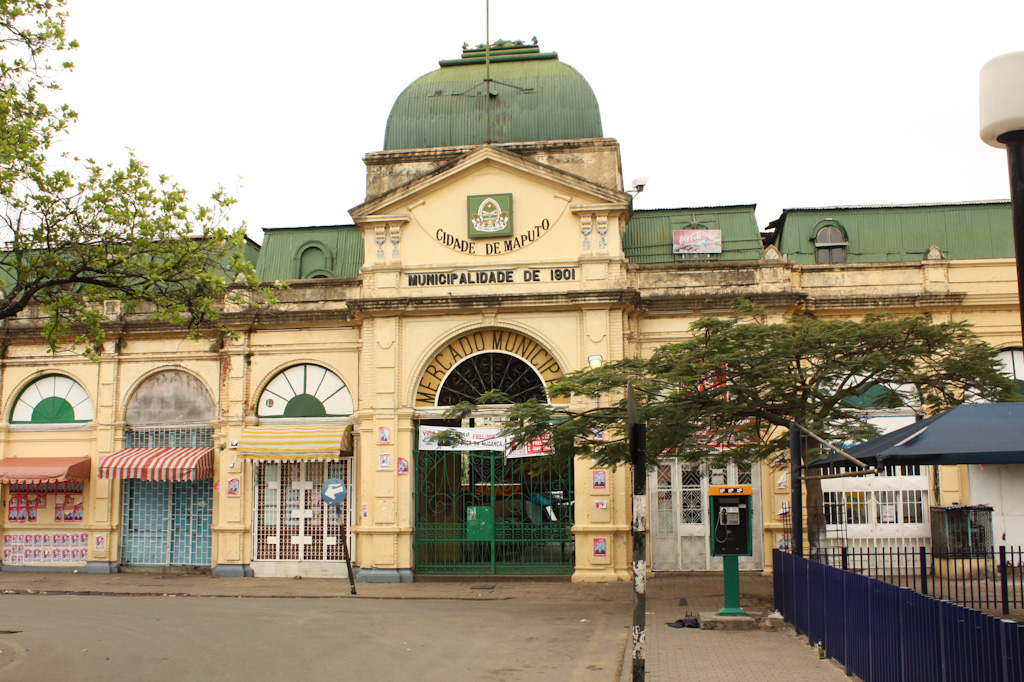
Maputo is the capital and largest city of Mozambique, located on the southern coast of the country along the Indian Ocean. Originally known as Lourenço Marques during the colonial period, Maputo became the capital of independent Mozambique in 1975. The city is known for its vibrant cultural scene, scenic waterfront, and Portuguese colonial architecture.
Maputo has grown into a bustling metropolis and serves as the economic and political heart of Mozambique. It is a key hub for the country’s port trade, with its harbor facilitating much of Mozambique’s import and export activity. The city’s cultural diversity is reflected in its cuisine, music, and architecture, with a blend of African, Portuguese, and Arab influences.
Interesting Fact:
Maputo is home to the Maputo Railway Station, a stunning piece of colonial-era architecture that was designed by the same architect who built the famous Eiffel Tower in Paris.
Windhoek, Namibia
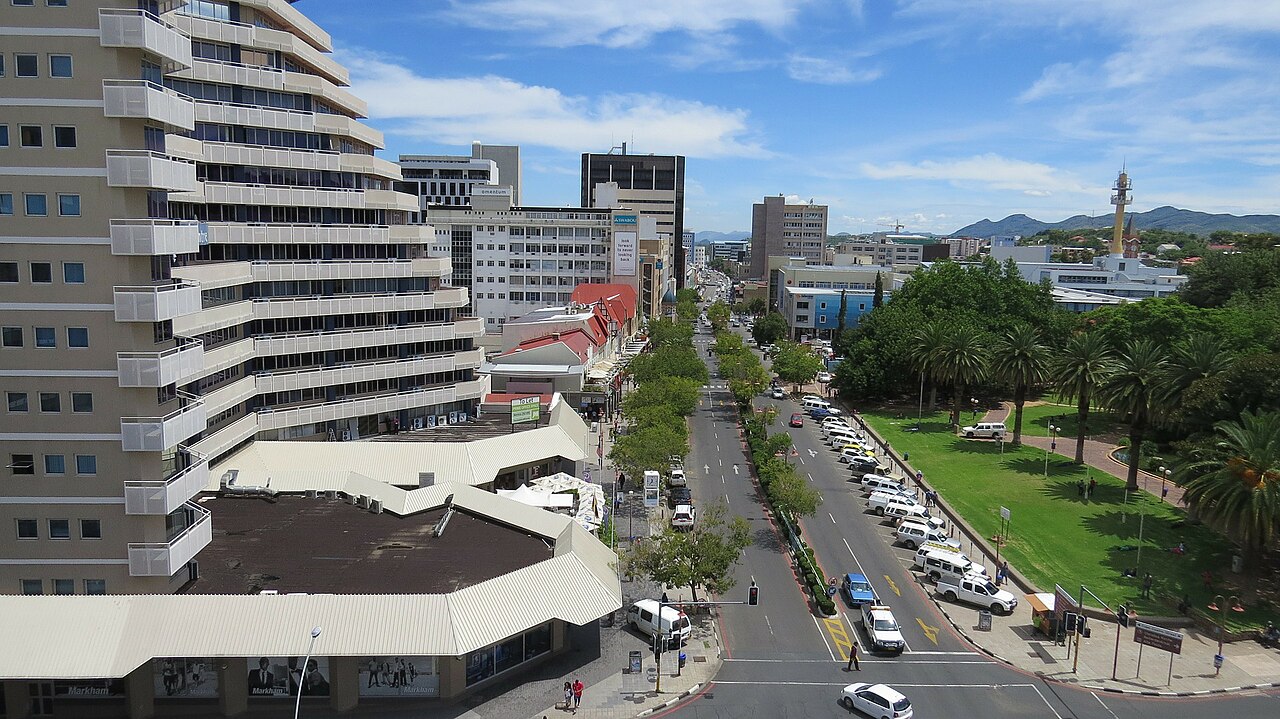
Windhoek is the capital and largest city of Namibia, located in the central part of the country. The city sits in a valley between the Khomas Highland mountain range and the Eros Mountains. Windhoek is the political, economic, and cultural center of Namibia, with a population of around 400,000 people. The city was founded by the Germans in the late 19th century and became the capital after Namibia gained independence from South Africa in 1990.
Windhoek is known for its German colonial architecture, which stands alongside more modern structures. The city serves as a major transportation hub for Namibia, with a well-developed road and rail network. Windhoek is also famous for its rich cultural diversity, blending indigenous African, European, and South African influences. The city is home to several museums, theaters, and art galleries, reflecting Namibia’s heritage.
Interesting Fact:
Windhoek is one of the few capitals in Africa where visitors can see a blend of traditional African culture with German colonial architecture, offering a unique cultural experience.
Niamey, Niger

Niamey is the capital and largest city of Niger, located on the Niger River in the western part of the country. It serves as the political, economic, and cultural center of Niger, with a population of approximately 1 million people. The city was founded in the early 19th century and became the capital after Niger gained independence from France in 1960.
Niamey is known for its vibrant markets, traditional crafts, and important cultural institutions, such as the National Museum of Niger. The city is also a center for education, with several universities and technical colleges. Niamey plays a key role in Niger’s economy, particularly in trade and commerce, as it is situated near the border with Nigeria, a major regional economic player.
Interesting Fact:
Niamey is one of the fastest-growing cities in Africa, driven by both population growth and its importance as a regional trade and cultural center.
Abuja, Nigeria
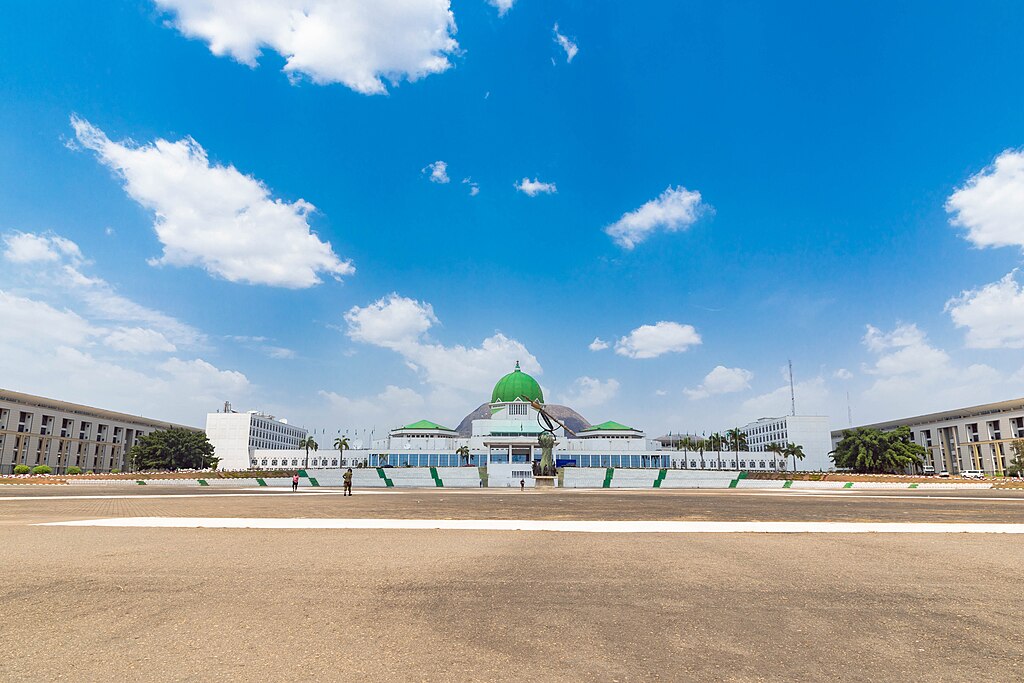
Abuja is the capital city of Nigeria, situated in the center of the country. It was officially designated as the capital in 1991, replacing Lagos, with the goal of having a more centrally located administrative hub. Abuja was carefully planned to accommodate the diverse ethnic groups of Nigeria and has grown rapidly since its establishment. The city is home to numerous government institutions, foreign embassies, and international organizations.
The architecture of Abuja is a mix of modern structures and traditional Nigerian design, with landmarks like the National Mosque and the Nigerian National Christian Centre showcasing the country’s religious diversity. Abuja is also known for its beautiful natural surroundings, including the Aso Rock, a massive rock formation that towers over the city. The city’s rapid growth has led to a thriving business district and cultural scene.
Interesting Fact:
Abuja is one of the few capital cities in the world that was built from scratch, making it a unique example of a planned city designed to reflect Nigeria’s cultural diversity.
Brazzaville, Republic of the Congo
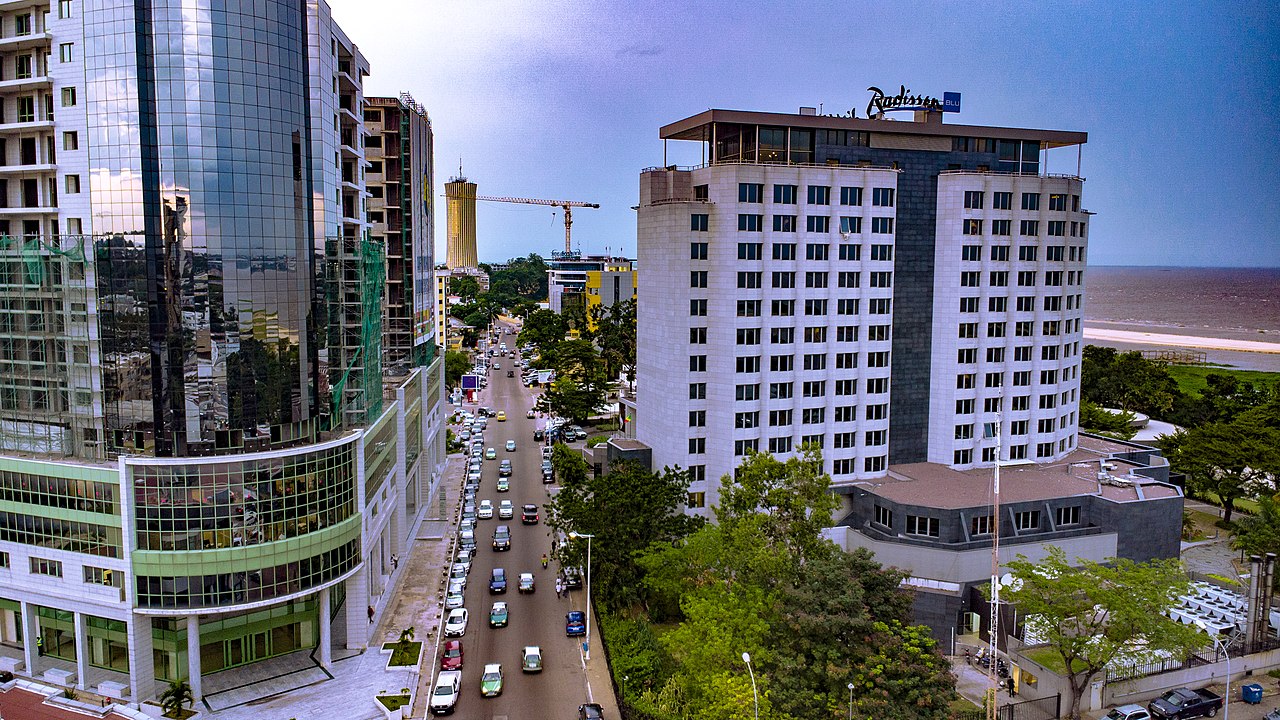
Brazzaville is the capital and largest city of the Republic of the Congo. Situated on the Congo River, it is located directly across from Kinshasa, the capital of the Democratic Republic of the Congo, making them the world’s two closest capital cities. Brazzaville is a political, cultural, and economic hub in Central Africa, with a diverse population and a history influenced by French colonialism.
The city boasts a variety of cultural institutions, including the National Museum of the Congo and the Basilique Sainte-Anne, a Catholic cathedral. Brazzaville’s location on the Congo River has historically made it an important port for trade. The city is also a key center for regional diplomacy and peacekeeping efforts, as Congo has played an active role in various peace negotiations in the region.
Interesting Fact:
Brazzaville and Kinshasa, located on opposite banks of the Congo River, are the closest capital cities in the world, just 4 kilometers apart.
Kigali, Rwanda
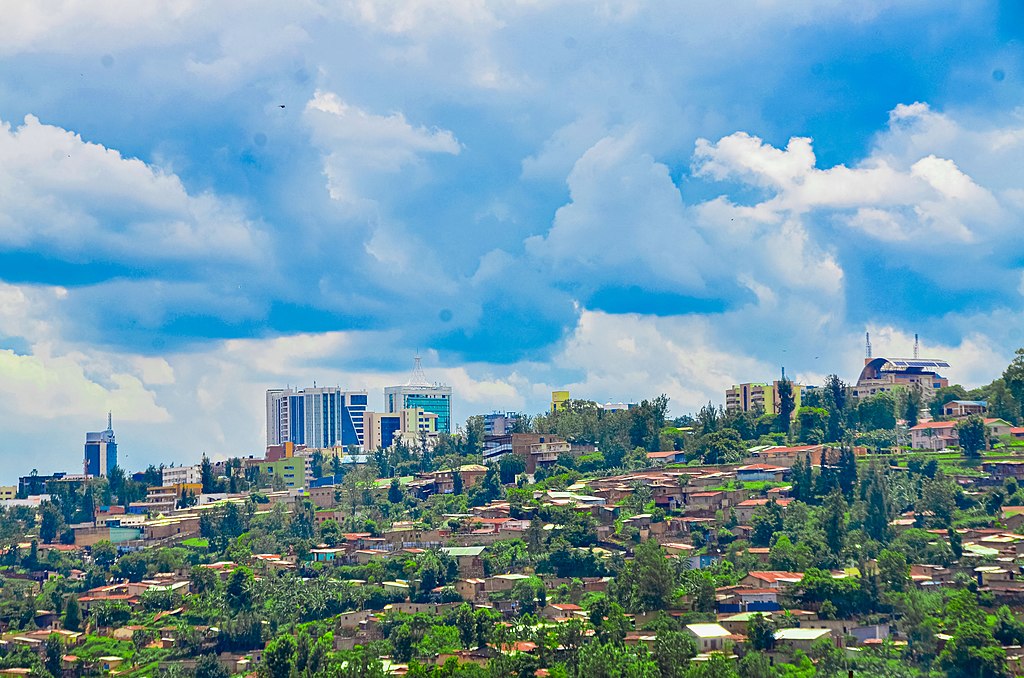
Kigali is the capital and largest city of Rwanda, located near the geographic center of the country. The city is spread over a series of lush hills and valleys, making it one of the most picturesque capital cities in Africa. Kigali has emerged as a symbol of Rwanda’s post-genocide recovery, with a focus on modernization and economic development. It became the capital in 1962 after Rwanda gained independence from Belgium.
Kigali is known for its cleanliness, orderliness, and vibrant cultural scene. The city boasts numerous museums, galleries, and theaters, reflecting Rwanda’s rich history and cultural heritage. Kigali is also the hub for Rwanda’s growing tourism industry, which focuses on wildlife conservation, particularly the mountain gorillas in Volcanoes National Park. The city’s economic growth is bolstered by its role as a regional center for trade and business.
Interesting Fact:
Kigali is one of the cleanest cities in Africa, a reflection of Rwanda’s strong environmental policies, including a nationwide ban on plastic bags.
São Tomé, São Tomé and Príncipe
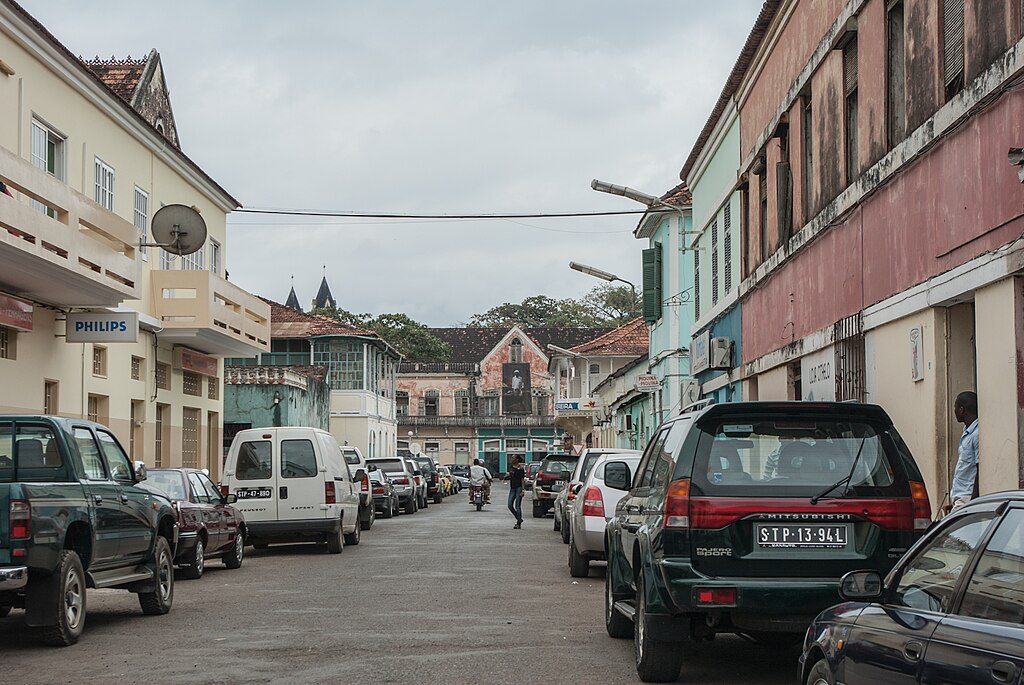
São Tomé is the capital and largest city of São Tomé and Príncipe, an island nation located in the Gulf of Guinea. The city is situated on São Tomé Island and is known for its colonial-era architecture and picturesque beaches. São Tomé was founded in the late 15th century by Portuguese explorers and became the capital of the country after its independence from Portugal in 1975.
São Tomé is the economic and cultural heart of the country, with a focus on agriculture, particularly cocoa and coffee production. The city has a vibrant cultural life, with numerous festivals, markets, and music events that celebrate the island’s diverse heritage. Despite its small size, São Tomé has a rich history shaped by Portuguese colonialism and the slave trade, and it serves as the gateway for tourism to the country’s beautiful islands.
Interesting Fact:
São Tomé is home to some of the world’s best cocoa, and the country is considered one of the top producers of high-quality chocolate.
Dakar, Senegal

Dakar is the capital and largest city of Senegal, located on the Cape Verde Peninsula along the Atlantic coast. The city has a rich cultural history, having been a significant center of trade and politics in West Africa for centuries. Dakar became the capital of Senegal when the country gained independence from France in 1960 and has since evolved into a bustling metropolis and a hub for culture, commerce, and education in the region.
Dakar is known for its vibrant arts scene, including music, dance, and theater. The city is home to the Dakar-Djibouti Railway and the vibrant markets of Sandaga, which attract both locals and tourists. Dakar is also famous for its colonial architecture, including the French-built Palais de la République and the Dakar Grand Mosque. The city serves as the main gateway to the country’s beautiful beaches and islands, including Gorée Island, a UNESCO World Heritage site.
Interesting Fact:
Dakar is known as the “Cultural Capital of Africa” due to its strong tradition of music, especially the popular mbalax style, which has influenced artists across the continent.
Victoria, Seychelles
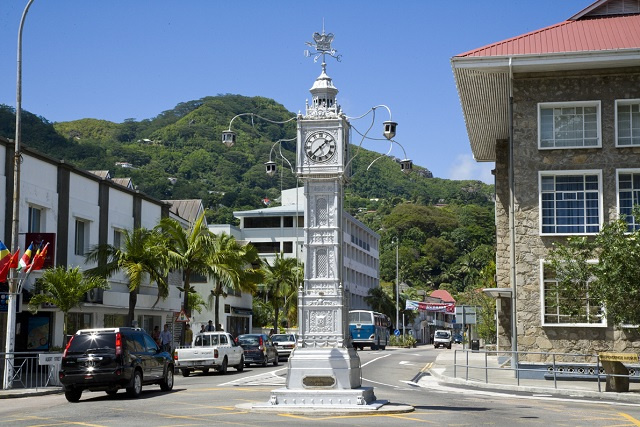
Victoria is the capital and largest city of Seychelles, an archipelago of 115 islands in the Indian Ocean. Located on the largest island, Mahé, Victoria is a small but important city with a population of around 26,000 people. Despite its size, Victoria plays a central role in the country’s administration, commerce, and tourism industry.
The city is known for its beautiful colonial-era buildings, markets, and botanical gardens. Victoria is a popular destination for tourists, drawn to its stunning natural beauty and pristine beaches. The city also serves as the gateway for visitors to explore the country’s many islands and marine reserves. Seychelles’ diverse culture, a mix of African, European, and Asian influences, is reflected in the vibrant local markets and culinary traditions.
Interesting Fact:
Victoria is one of the smallest capital cities in the world, yet it offers a wealth of cultural and natural attractions, from art galleries to nature reserves.
Freetown, Sierra Leone
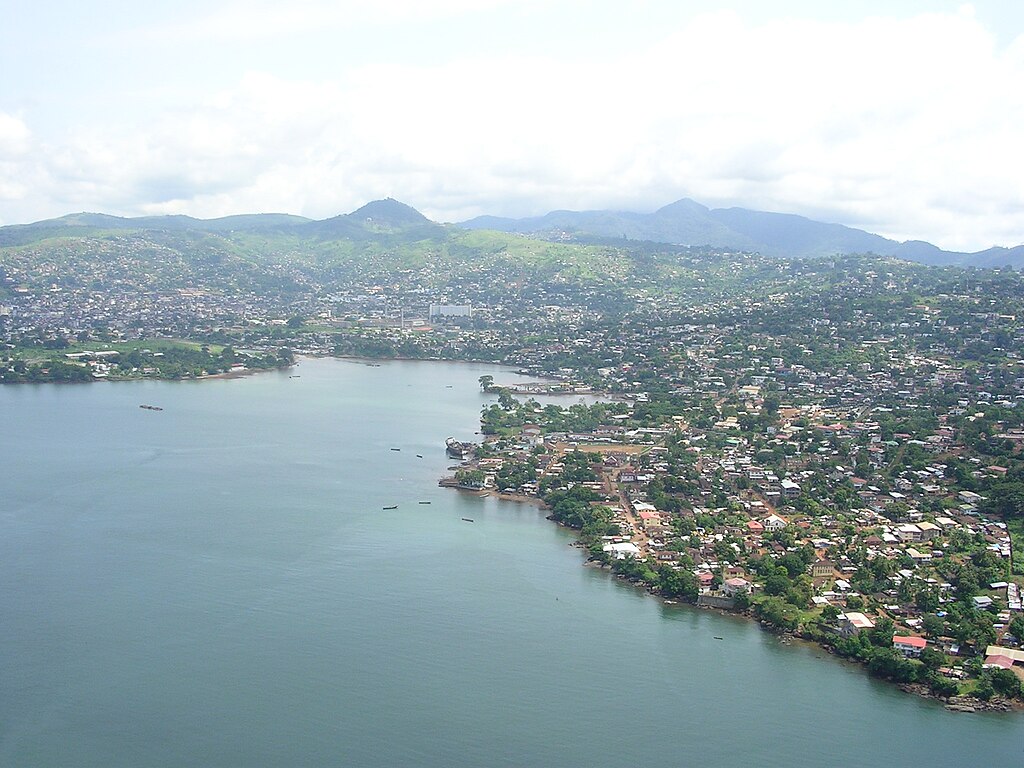
Freetown is the capital and largest city of Sierra Leone, located on the Atlantic coast of West Africa. Founded in 1792 by formerly enslaved people from North America, Freetown has a unique historical significance. The city has grown rapidly over the years, evolving into a major port city and the political, economic, and cultural heart of Sierra Leone.
Freetown is known for its colonial architecture, beautiful beaches, and vibrant music scene. The city serves as the country’s primary trade hub, with a major port that handles much of Sierra Leone’s imports and exports. Freetown is also home to several important cultural institutions, including the Sierra Leone National Museum, which showcases the country’s history, and the famous Cotton Tree, a symbol of the city’s heritage.
Interesting Fact:
Freetown is famous for its vibrant street life and music scene, particularly its contribution to the development of the West African genre of music known as “highlife.”
Mogadishu, Somalia
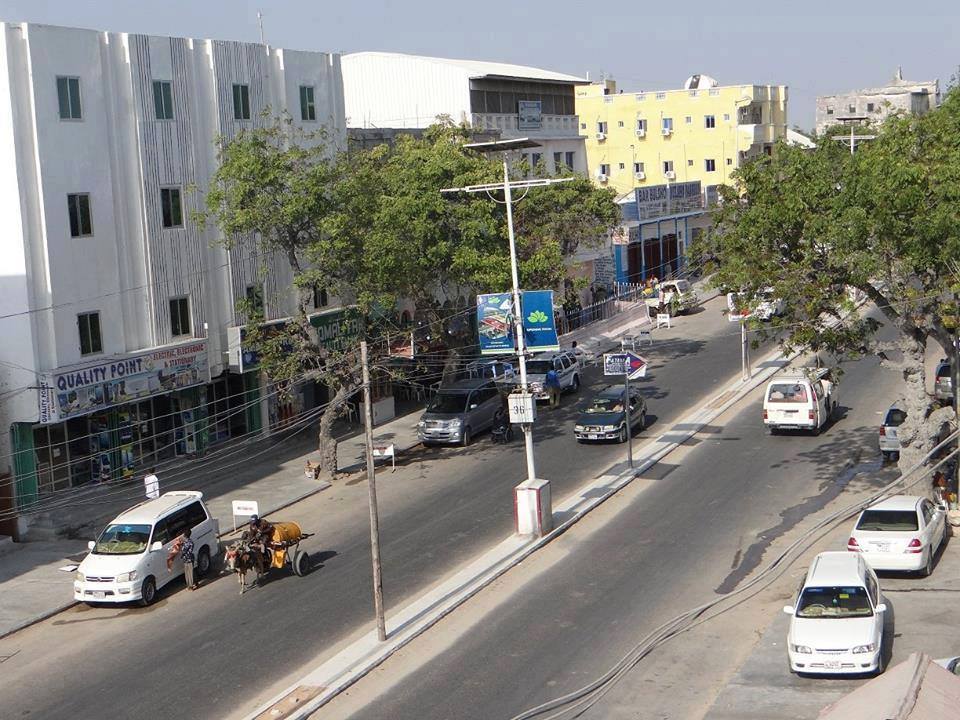
Mogadishu is the capital and largest city of Somalia, located on the Indian Ocean coast in the southeastern part of the country. As one of the oldest cities in Africa, Mogadishu has a rich history dating back over a thousand years. It became the capital of Somalia in 1960 when the country gained independence, and it has remained the political, economic, and cultural center of Somalia ever since. The city is home to a mix of traditional Somali culture and modern developments.
Mogadishu is known for its strategic position as a key port city. Over the years, the city has seen periods of growth and decline, especially due to the Somali Civil War. However, in recent years, it has experienced a resurgence, with rebuilding efforts focusing on infrastructure, governance, and economic development. Mogadishu’s urban landscape features a blend of modern high-rises, colonial architecture, and traditional Somali structures.
Interesting Fact:
Mogadishu was once known as the “White Pearl of the Indian Ocean” due to its beautiful beaches and bustling port trade during the medieval period.
Pretoria, South Africa

Pretoria is one of South Africa’s three capitals, serving as the administrative capital. It is located in the northern part of the country, within the Gauteng province. Pretoria has played a significant role in the political landscape of South Africa since the 19th century and was the capital of the South African Republic before the unification of the country in 1910. As the administrative capital, Pretoria is home to the executive branch of the South African government.
Pretoria is known for its historical significance, with many government buildings, embassies, and museums located in the city. The Union Buildings, designed by architect Sir Herbert Baker, are an iconic feature of Pretoria and house the offices of the President of South Africa. The city is also recognized for its natural beauty, particularly the jacaranda trees that line its streets, creating a stunning purple bloom in the spring. It is also home to several universities and educational institutions.
Interesting Fact:
Pretoria is often called the “Jacaranda City” because of the thousands of jacaranda trees that fill the streets with purple blossoms every spring.
Juba, South Sudan
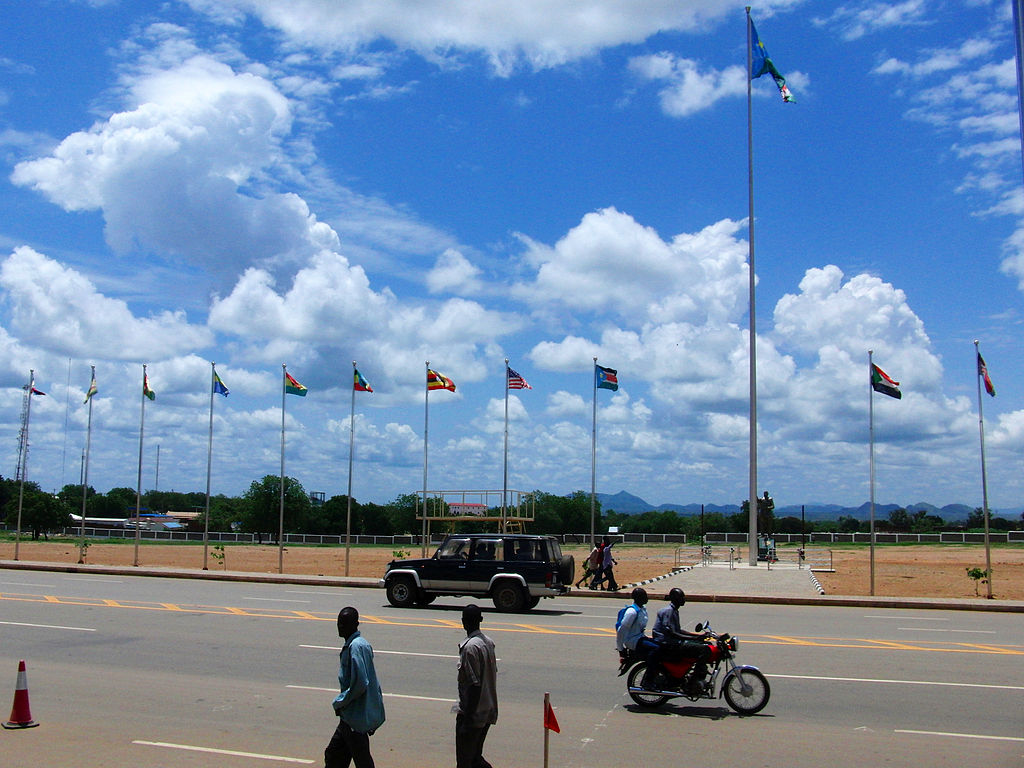
Juba is the capital and largest city of South Sudan, located in the southern part of the country along the White Nile River. It became the capital of South Sudan in 2011 when the country gained independence from Sudan. As the newest capital in Africa, Juba has experienced rapid growth, evolving into the political and economic center of South Sudan, which is a country still in the process of rebuilding after decades of conflict.
Juba’s role as the capital is central to the country’s development, hosting government institutions, international organizations, and embassies. Despite its relatively small size, Juba serves as the country’s economic hub, with most businesses and trade activities concentrated in the city. The city’s landscape is characterized by a mix of modern buildings and more traditional structures, and it is situated near the meeting point of the White Nile and the Bahr el Jebel River.
Interesting Fact:
Juba is one of the youngest capital cities in the world, having only become the capital after South Sudan’s independence in 2011.
Khartoum, Sudan

Khartoum is the capital and largest city of Sudan, located at the confluence of the Blue and White Nile rivers. The city is the political, cultural, and economic heart of Sudan and has a history that dates back to ancient times. Khartoum has evolved significantly over the years, from its early days as a trading post to its current status as the administrative and financial center of the country.
The city is known for its historical sites, including the famous confluence of the Nile rivers, and it is home to various important institutions, including universities, museums, and the Sudanese National Museum. The city is a blend of modern and traditional architecture, with large government buildings and markets coexisting with older, more traditional structures. Khartoum is a key center for Sudan’s political life and hosts many international embassies and organizations.
Interesting Fact:
Khartoum is uniquely located at the meeting point of the Blue and White Nile rivers, which is a symbolic feature of the city’s geographical and historical importance.
Dodoma, Tanzania
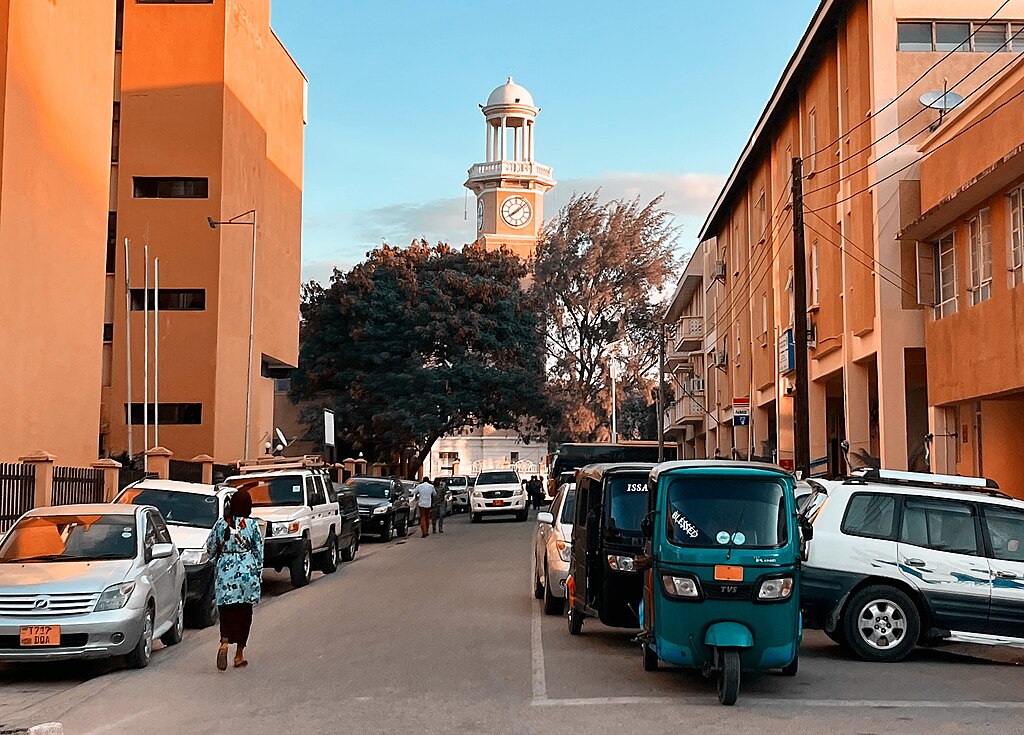
Dodoma, the capital of Tanzania, is located in the central part of the country, replacing Dar es Salaam as the political capital in 1974. Although Dar es Salaam remains the principal port and commercial hub, Dodoma is the seat of the Tanzanian government. The city was chosen as the capital due to its central location, which makes it more accessible from all parts of the country. Dodoma has seen rapid development in recent years, with improvements in infrastructure, including roads, schools, and government buildings. The city is also home to several government offices, embassies, and the National Assembly. Dodoma’s climate is semi-arid, and the surrounding landscapes feature dry savannahs, hills, and occasional woodlands, providing a picturesque backdrop to this growing capital.
Interesting Fact:
Dodoma is situated at a high altitude of 1,100 meters (3,609 feet) above sea level, which gives the city a cooler climate compared to coastal areas of Tanzania.
Lomé, Togo
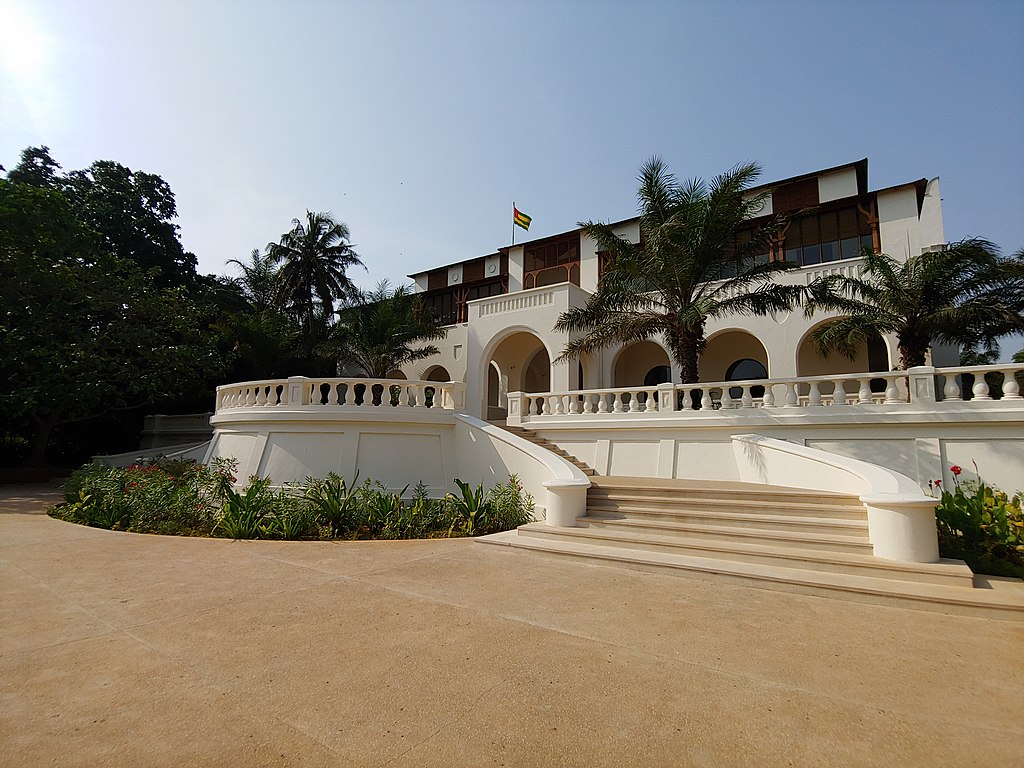
Lomé is the capital and largest city of Togo, located on the Gulf of Guinea in West Africa. As the main port city, Lomé is an important economic center for the country and the region, serving as a hub for trade and industry. The city became the capital of Togo when the country gained independence from France in 1960 and has since developed into a vibrant urban center.
Lomé is known for its bustling markets, particularly the Grand Marché, where vendors sell everything from textiles to food. The city is also home to several French colonial-era buildings, which contribute to its unique architectural style. Lomé is an important cultural hub, with various festivals, music events, and art exhibitions taking place throughout the year. It is also a key point for Togo’s economy, which relies on agriculture, phosphate exports, and maritime trade.
Interesting Fact:
Lomé is known for having one of the most important ports in West Africa, handling a significant portion of the region’s trade.
Tunis, Tunisia
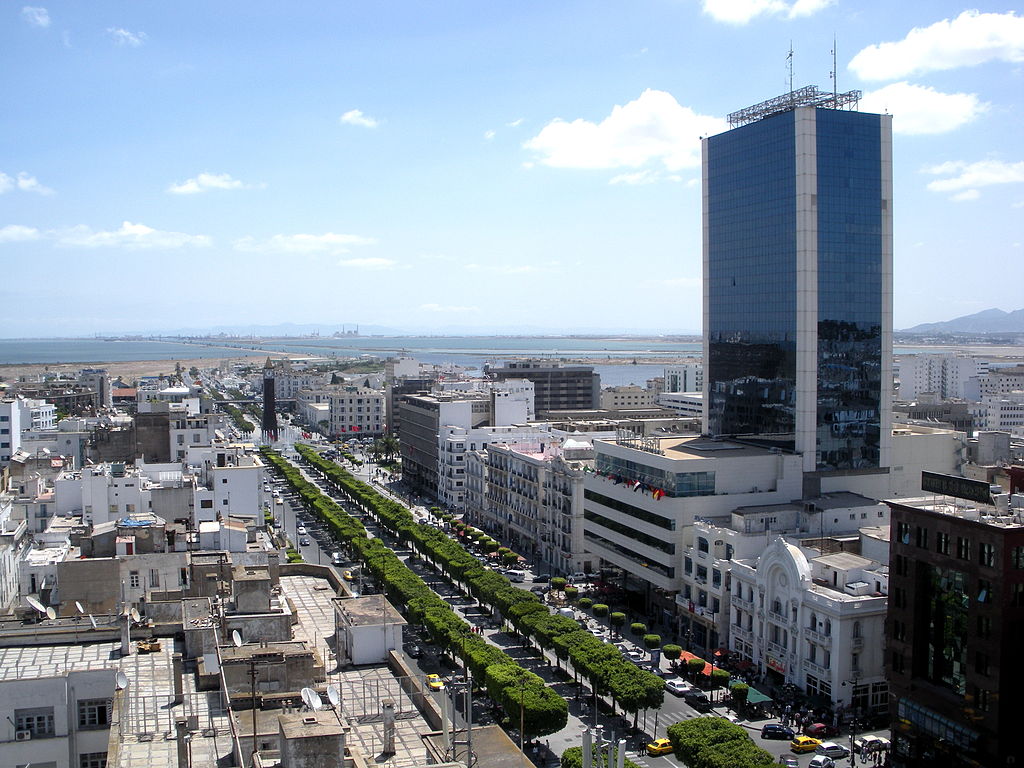
Tunis is the capital and largest city of Tunisia, located on the northern coast of the country, near the Mediterranean Sea. The city has a rich history that spans over 3,000 years, from its origins as a Phoenician trading post to its current status as the political, economic, and cultural heart of Tunisia. Tunis became the capital after the country gained independence from France in 1956.
Tunis is home to several significant historical sites, including the ancient ruins of Carthage, which is a UNESCO World Heritage site. The city’s Medina, a historic district filled with narrow alleys, mosques, and markets, is another UNESCO-listed site. Tunis is also a modern city, with wide boulevards, modern shopping malls, and business districts. The city’s economy is driven by industries such as tourism, manufacturing, and agriculture.
Interesting Fact:
Tunis is home to the ancient ruins of Carthage, which was once one of the most powerful cities in the ancient Mediterranean world.
Kampala, Uganda
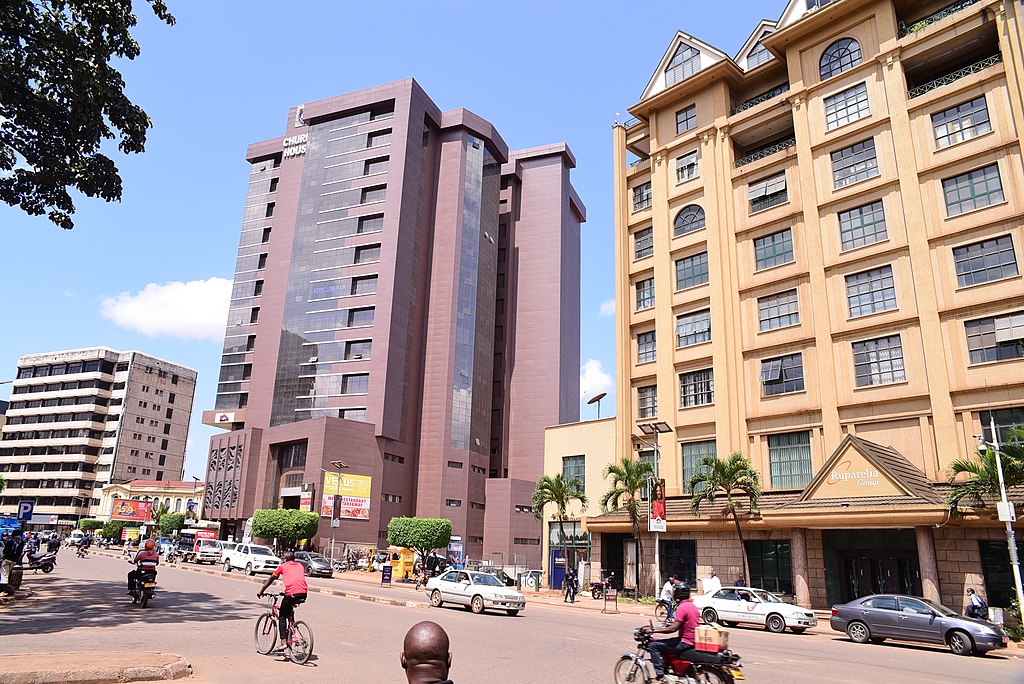
Kampala is the capital and largest city of Uganda, located near the shores of Lake Victoria in East Africa. The city’s history dates back to the late 19th century when it was founded as a military camp by the British colonial administration. Kampala became the capital of Uganda after the country gained independence in 1962 and has grown rapidly since then into a vibrant urban center.
Kampala is known for its diverse population, with various ethnic groups living side by side. The city is a cultural and economic hub, with a bustling commercial center, numerous markets, and a thriving nightlife. It is also home to several important institutions, including the Makerere University, one of the oldest and most prestigious universities in Africa. Kampala’s landscape is characterized by rolling hills, which offer scenic views of the city and surrounding areas.
Interesting Fact:
Kampala is known as the “City of Seven Hills” due to its topography, with the city spreading across seven hills, each offering a unique view of the surrounding landscape.
Lusaka, Zambia

Lusaka is the capital and largest city of Zambia, located in the southern part of the country. It became the capital of Zambia upon the country’s independence from Britain in 1964. Lusaka is the economic, political, and cultural center of Zambia and has experienced significant growth, both in population and infrastructure, over the past several decades.
The city is known for its bustling markets, shopping malls, and vibrant street life. Lusaka is home to various educational institutions, government offices, and foreign embassies. It also serves as the hub for Zambia’s mining and agricultural industries, with much of the country’s wealth generated from copper mining. Lusaka’s landscape is characterized by open spaces, with areas of lush greenery and forests.
Interesting Fact:
Lusaka is one of the fastest-growing cities in Africa, with its population steadily increasing due to rural-to-urban migration and economic growth.
Harare, Zimbabwe

Harare is the capital and largest city of Zimbabwe, located in the northern part of the country. Established as a colonial settlement in the late 19th century, Harare became the capital of Zimbabwe when the country gained independence in 1980. It is the economic, political, and cultural heart of the nation, with a rich history and vibrant urban life.
Harare is known for its bustling markets, lively arts scene, and large green spaces such as the Harare Gardens and the nearby Zimbabwe National Park. The city has several important institutions, including the University of Zimbabwe and the National Gallery. Harare’s economy is driven by agriculture, manufacturing, and mining, particularly the mining of minerals such as gold and diamonds. Despite economic challenges, Harare remains an important city in Southern Africa.
Interesting Fact:
Harare is sometimes called the “Sunshine City” due to its abundant sunshine throughout the year, making it one of the warmest cities in Africa.




